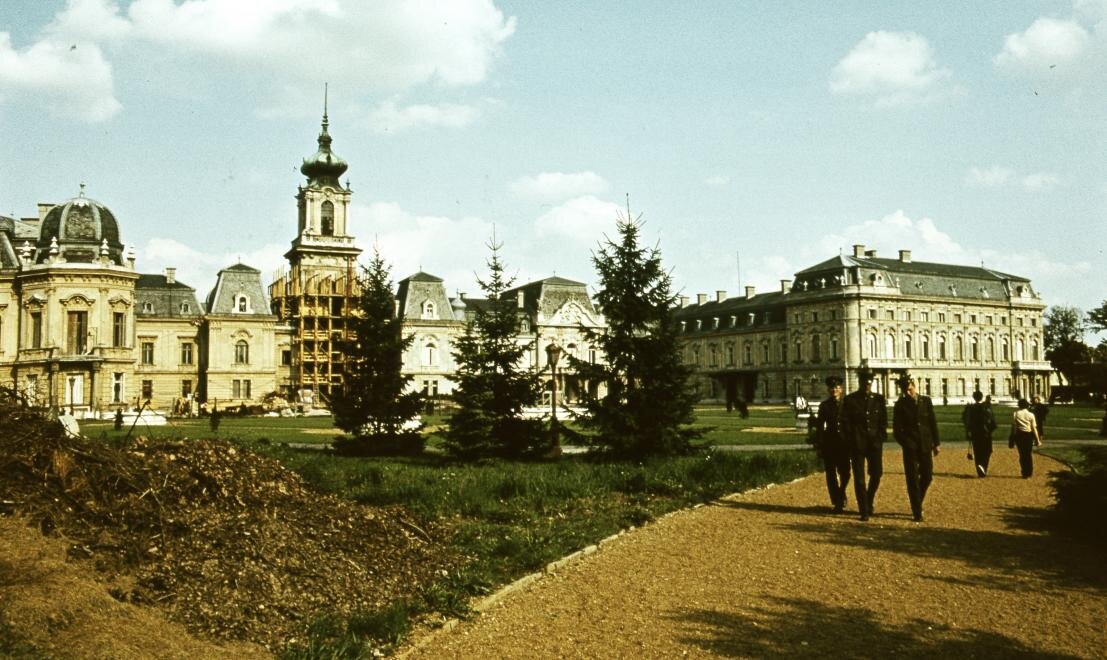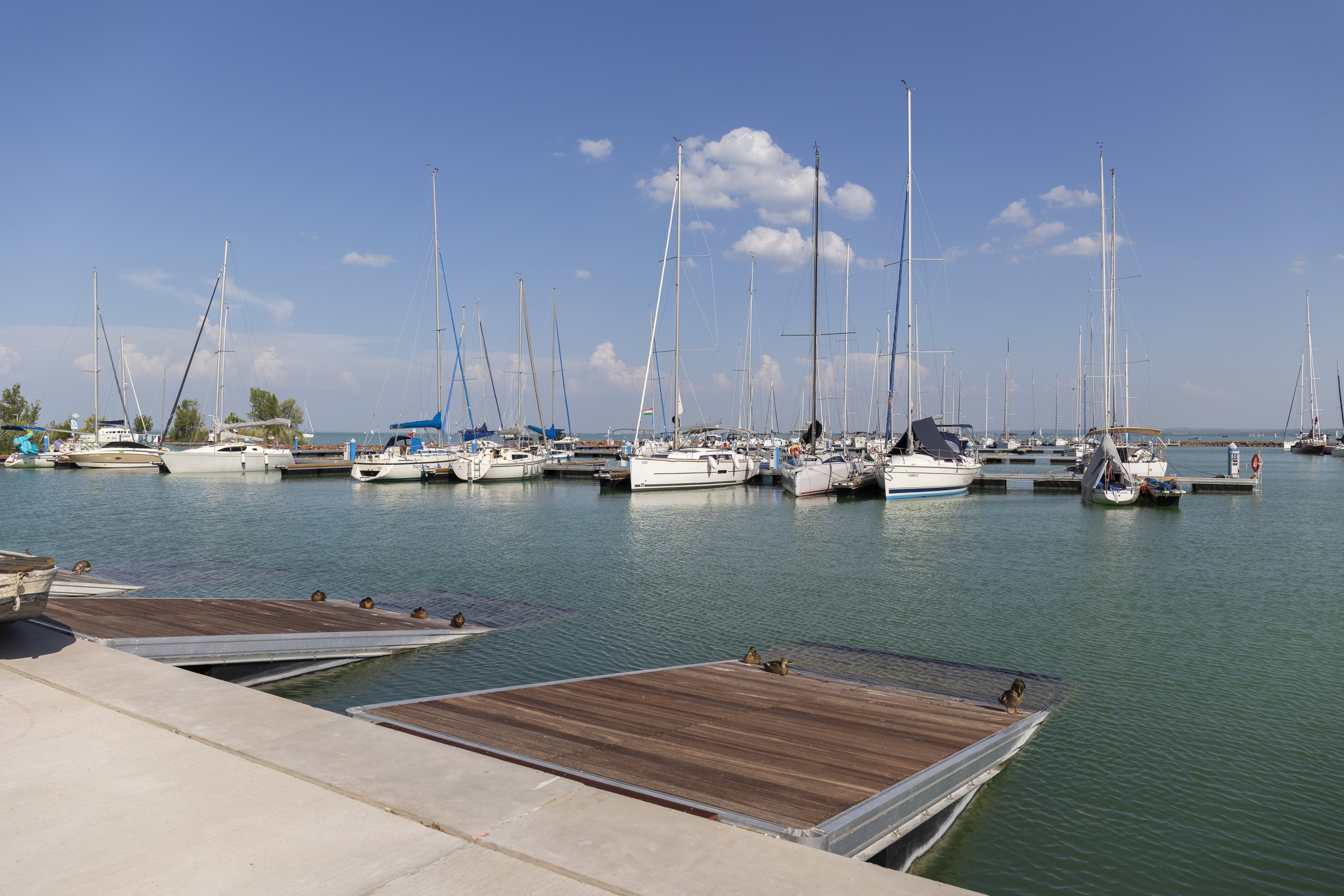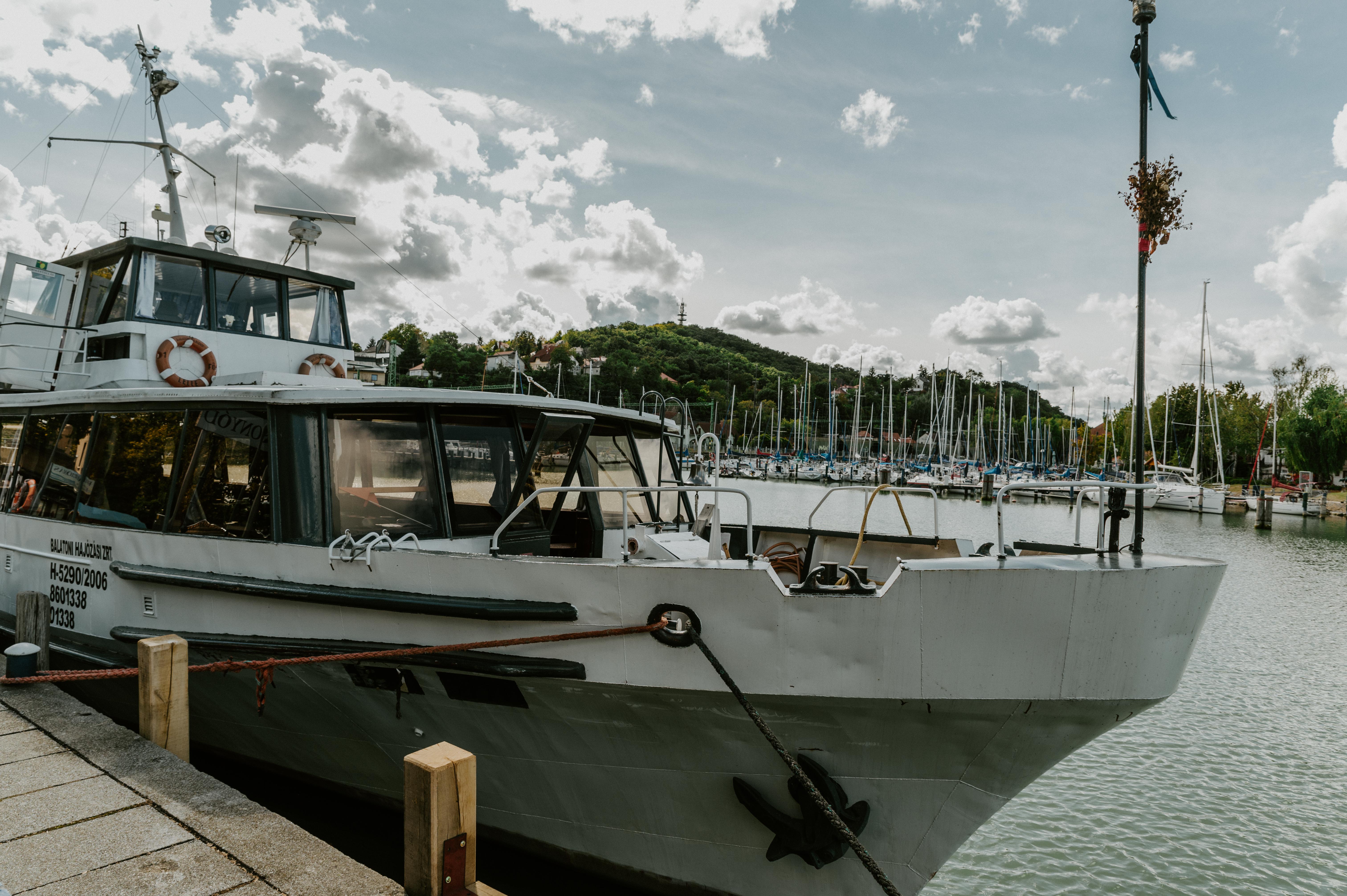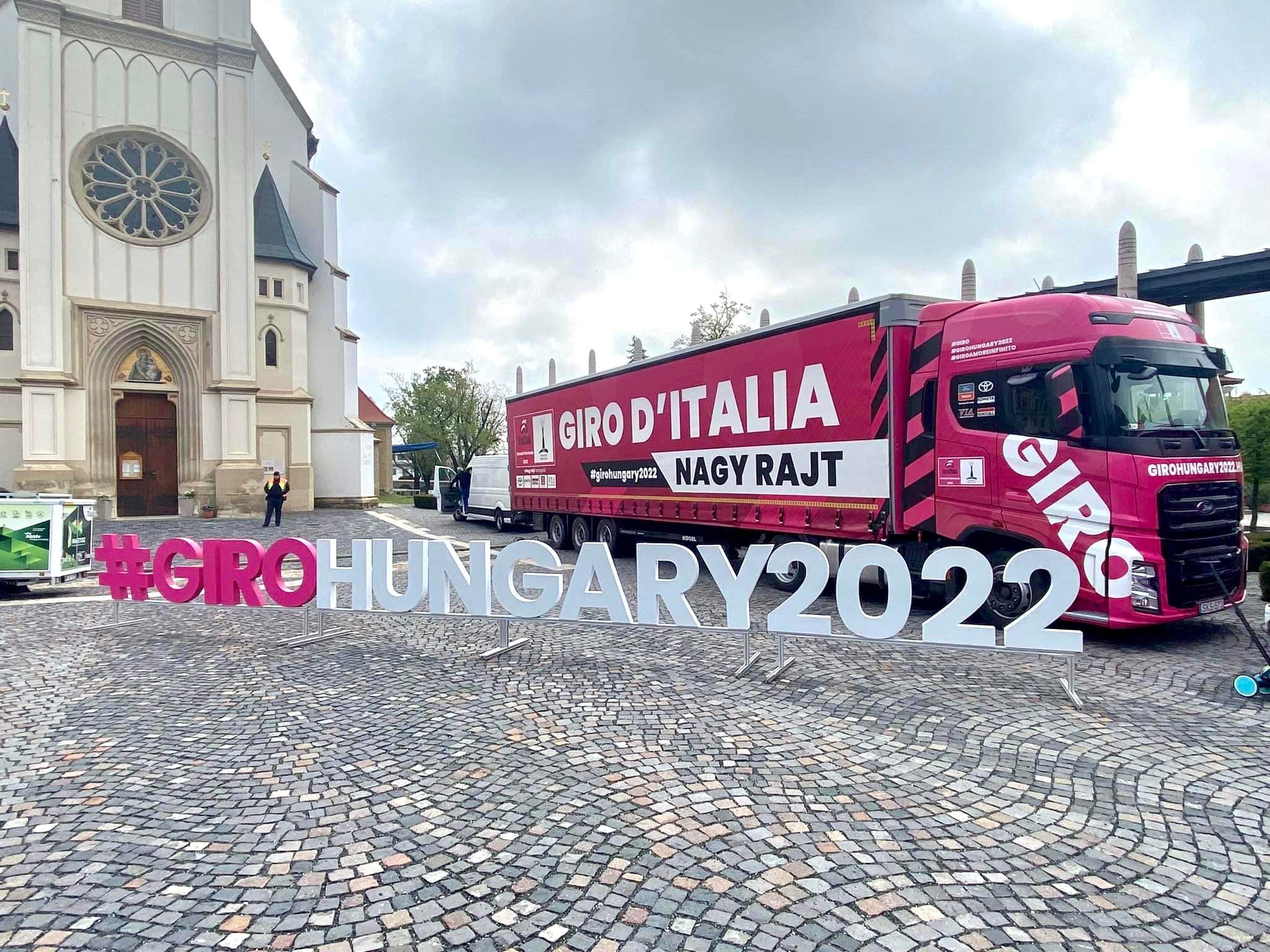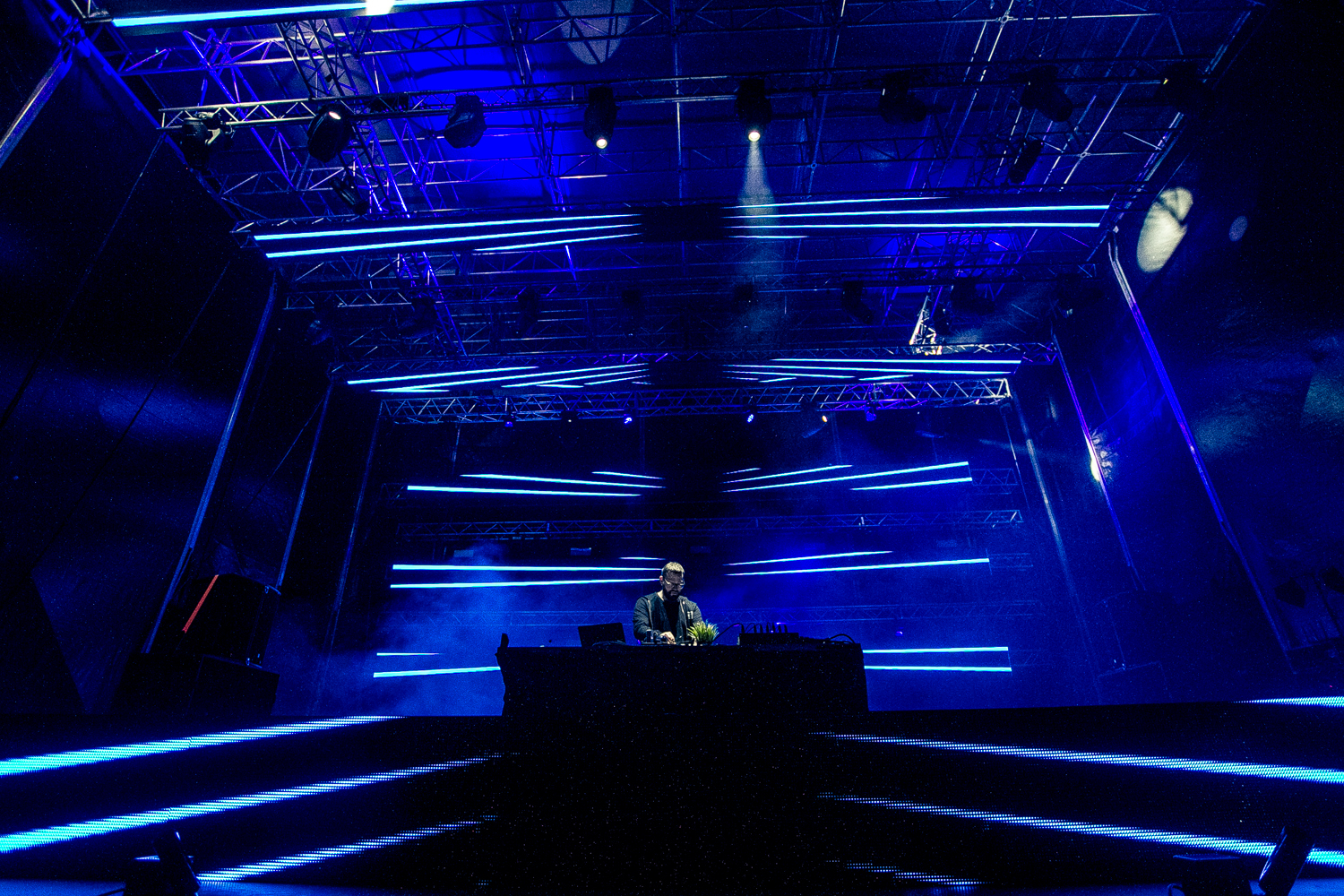Keszthely has a long history, with evidence of human civilisation dating back to the prehistoric era. Under the Romans, a fortress was built at Fenékpuszta, later used by other peoples during the Great Migration, and destroyed during Hungarian conquest of the Carpathian Basin. A one-street village formed here by the High Middle Ages, and Keszthely became a market town in the 1400s.
During the Ottoman occupation, the Turkish army never took the town – the centre, transformed into a fortress, stood its ground against every siege. The area then became the estate of the Festetics family and Count Kristóf Festetics commissioned the construction of the famous palace in 1745. The photograph below was taken around 1893, showing its gate. The central and eastern wings were built in Baroque style after 1745.
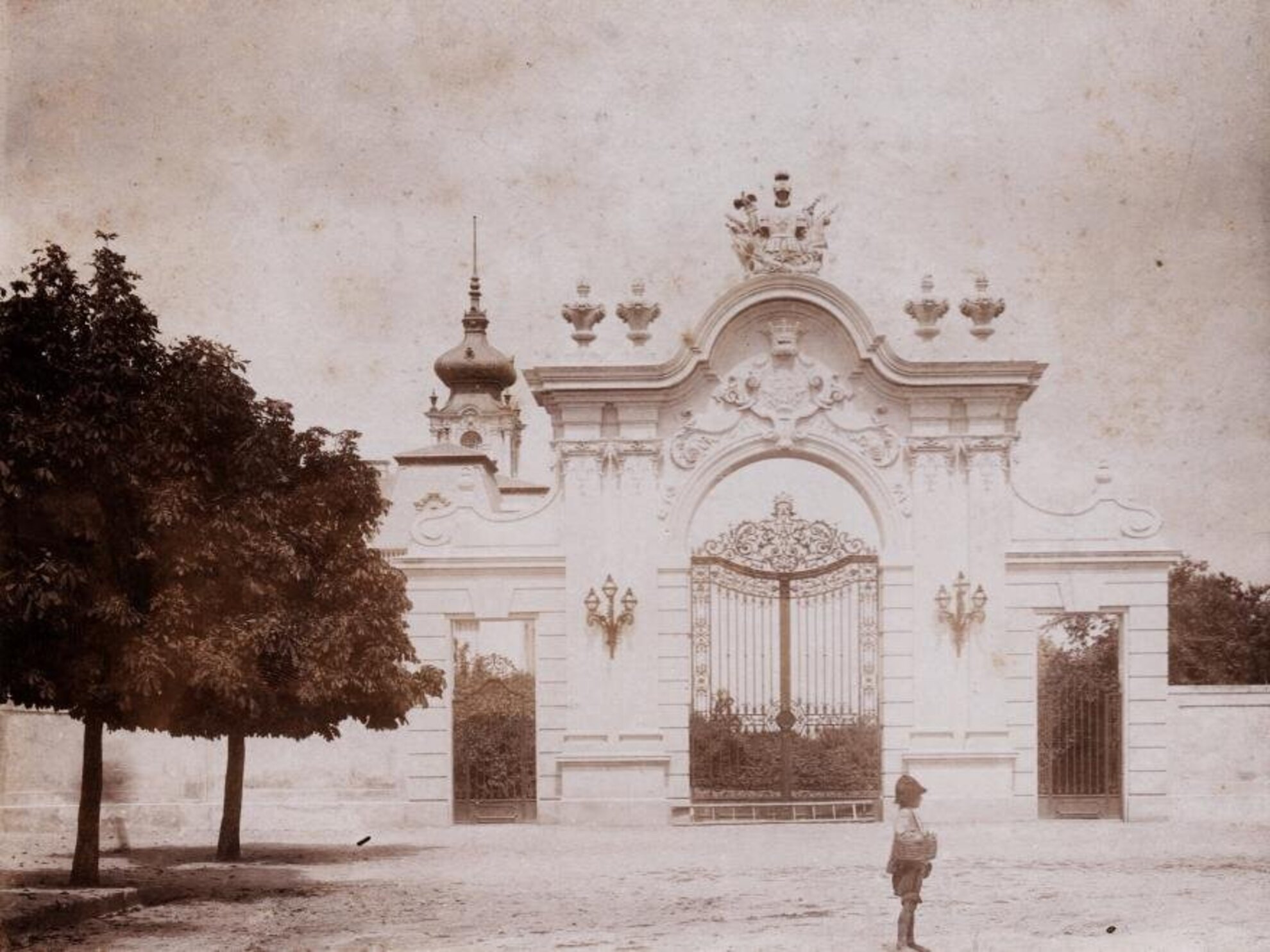
György Festetics started the refurbishment of the palace in 1792, in the so-called Zopf style of the late Baroque era. Construction went on until 1804, resulting in the building of the library in the new hall of the south wing, while the archives and chapel were also built at this time. This photograph was taken sometime between 1895 and 1899, labelled as The Palace of Count Tasziló Festetics. The count expanded the building in 1883-87: the east wing was elongated and a north wing was added in Neo-Baroque and Neo-Rococo styles. A tower was built and the roof replaced. Central heating and a plumbing system were also developed.
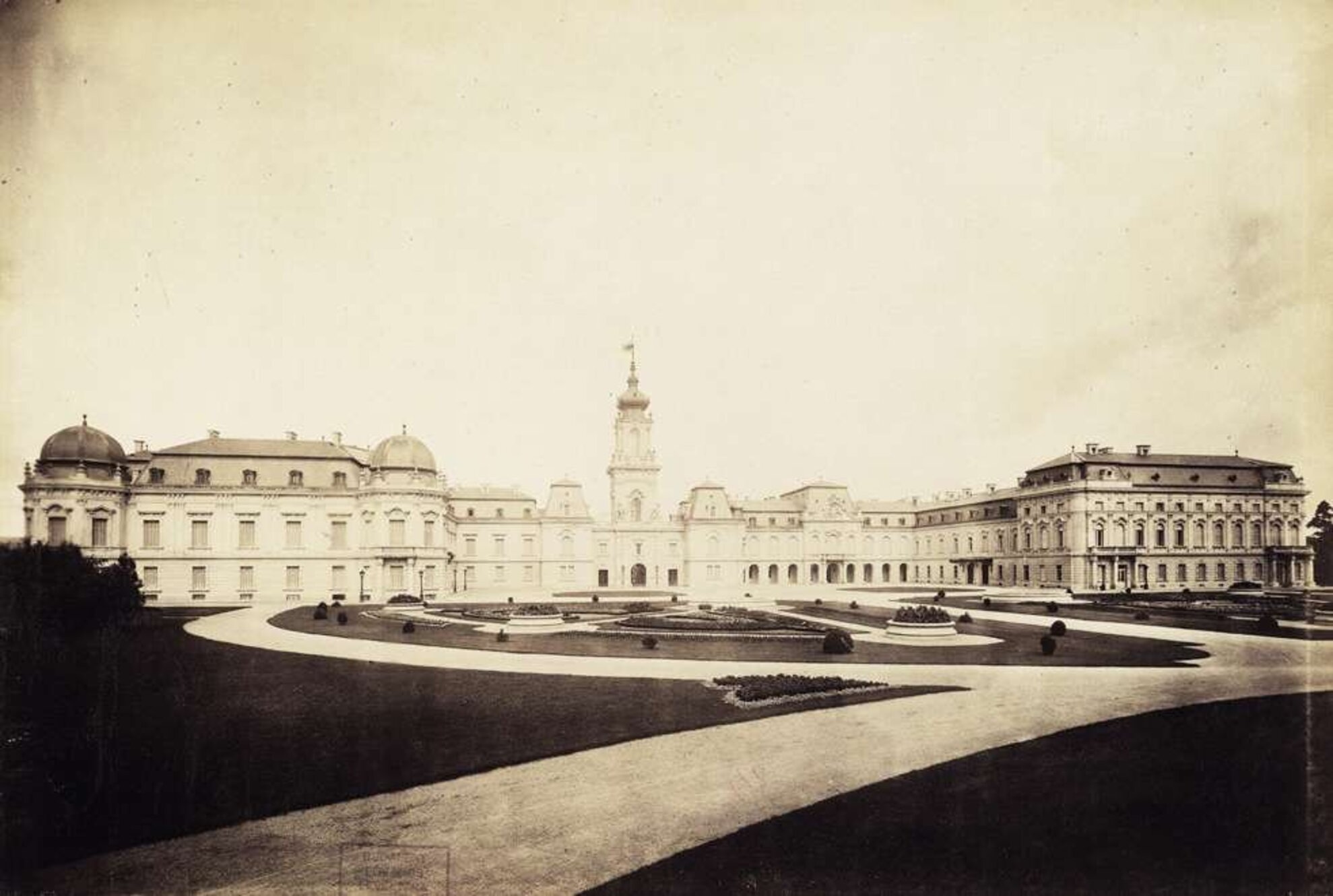
The next picture shows the Hullám and Balaton hotels with the Festetics Palace in the background, to the right, as viewed from the pier, taken between 1895 and 1899. The two hotels are in a bad shape these days, but hopefully these historic buildings, constructed in the 1890s, will soon be renewed. Built in 1893, Hullám is the older one, and it even survived a fire in 1912. Balaton was opened in 1895, and it was also caught by flames in 2008. Hullám is still in operation today.
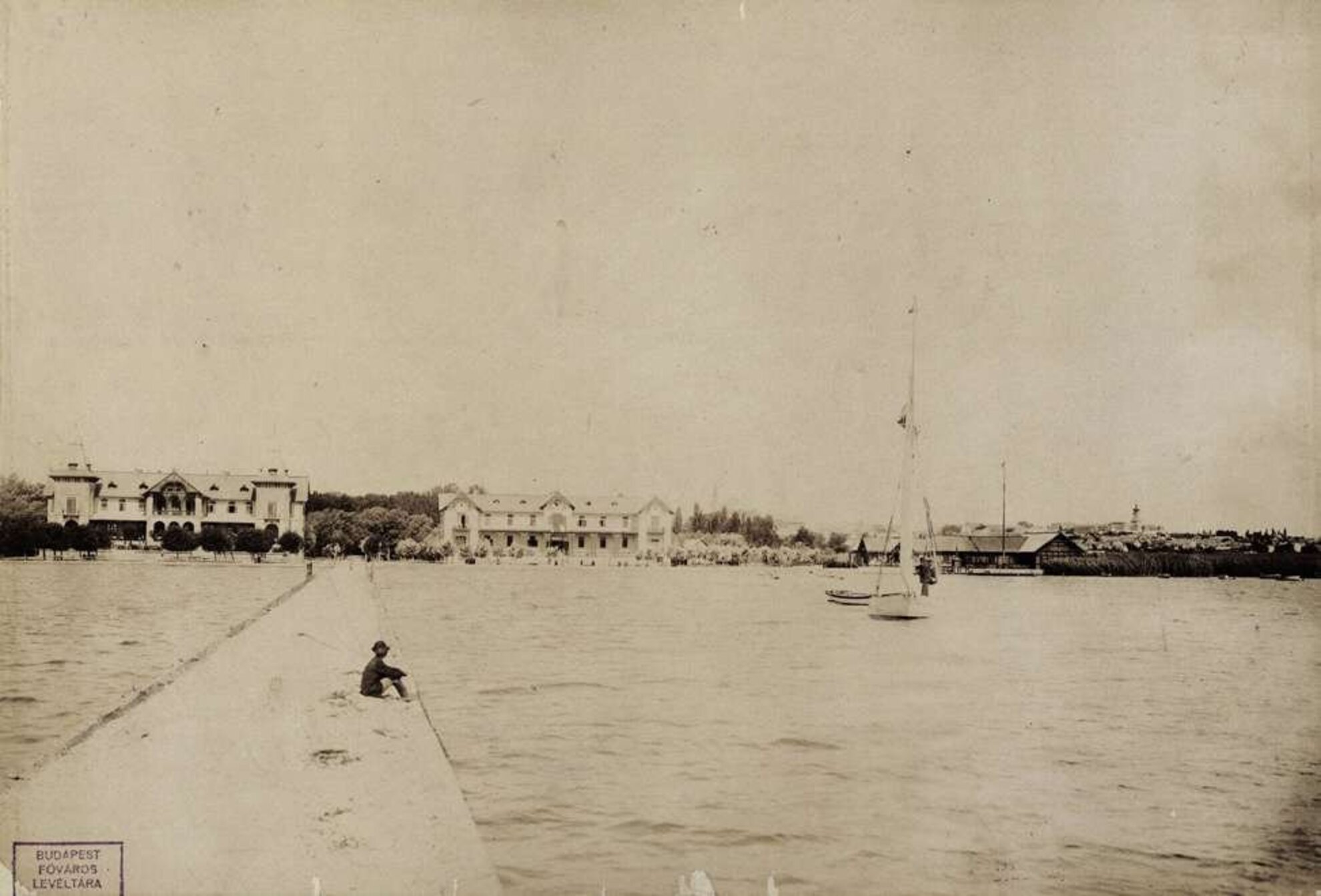
Helikon utca viewed from Vörösmarty utca, with the Our Lady of Hungary Church in the background, taken in 1903. The church is the oldest still standing in Keszthely. Its construction was completed some time around 1390, the towers added at the end of the 19th century.
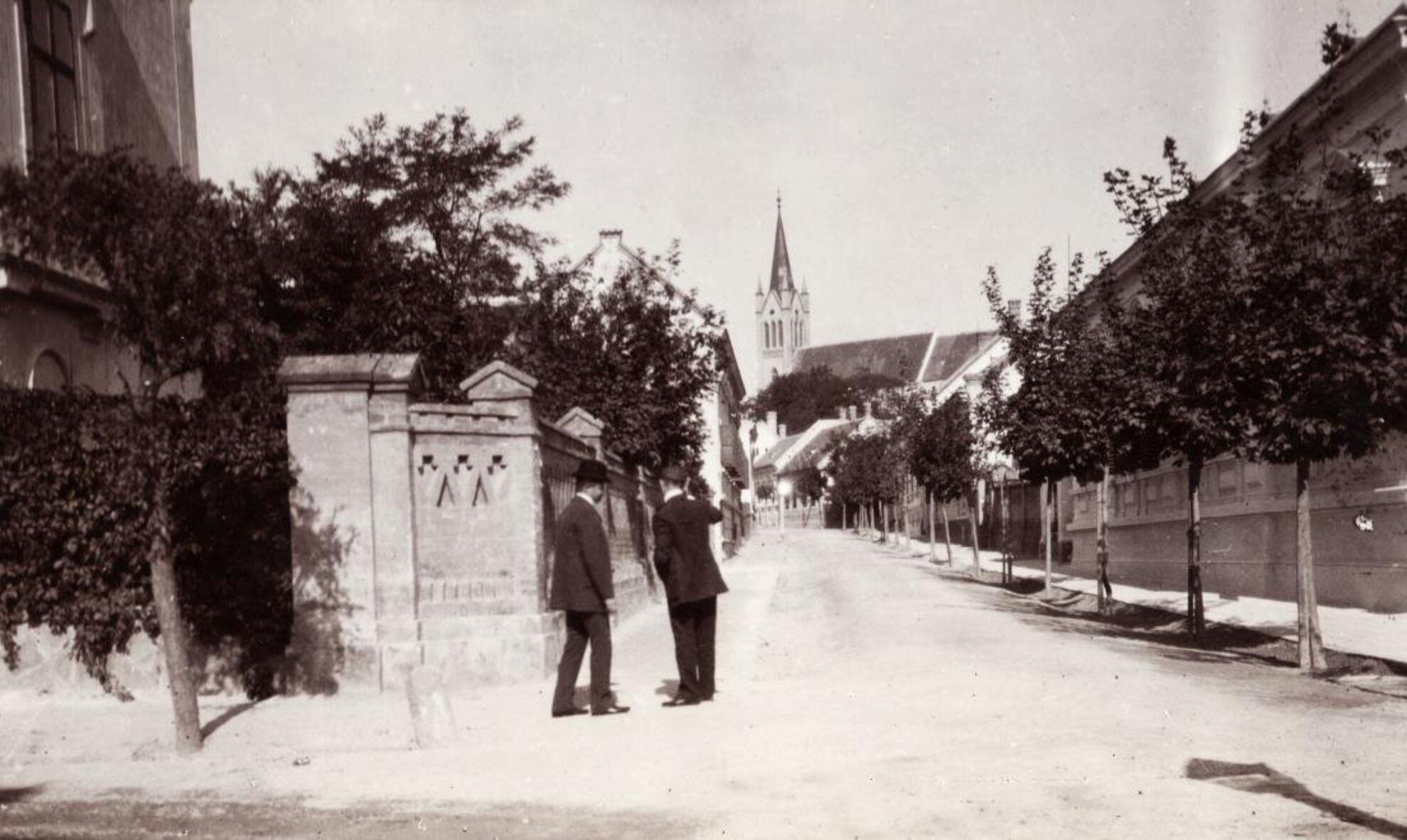
The marina can be seen in the foreground of this photograph captioned Sziget Beach and the marina behind a sailboat, with Keszthelyi-hegység in the background. Sailing and Keszthely have a long shared history. Locals founded the Keszthely Boating and Skating Association (later the Keszthely Yacht Club) in 1879.
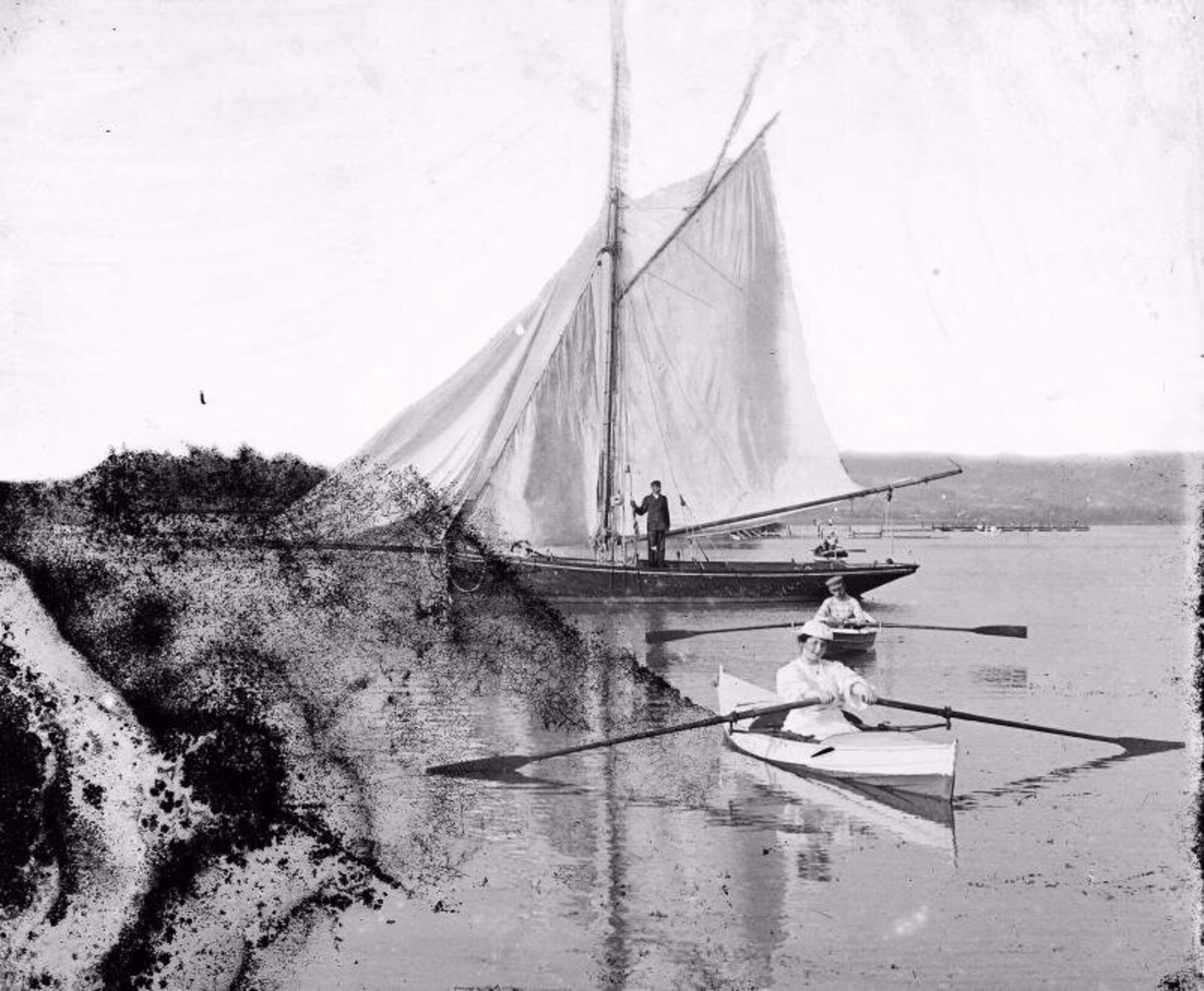
Helikon Park, 1908. This recreational attraction had only been open for a couple of years when this photo was taken. Today, the park is Keszthely’s green lungs, kept in fine condition for walkers, joggers and cyclists alike.
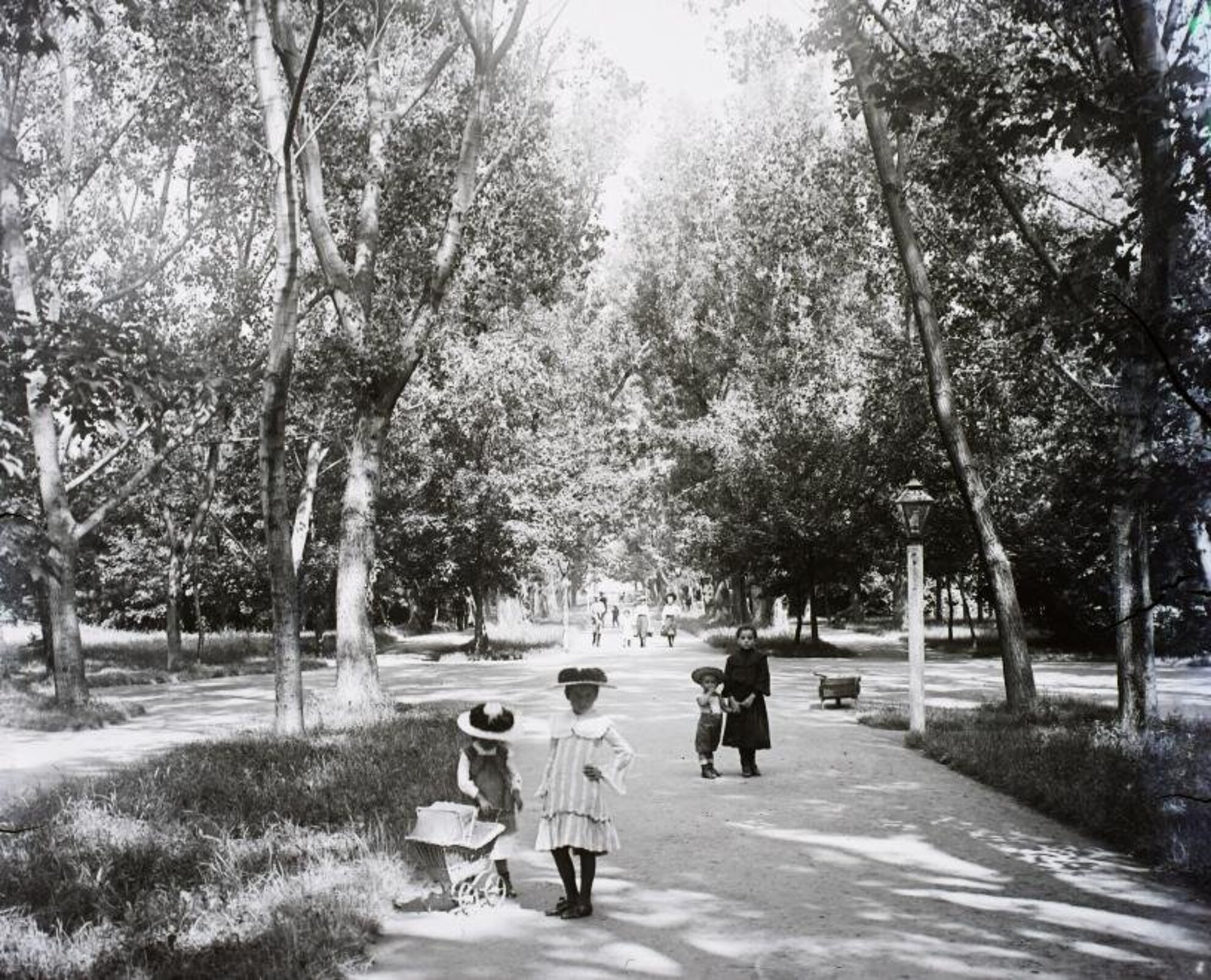
Hullám and Balaton Hotels in 1908.
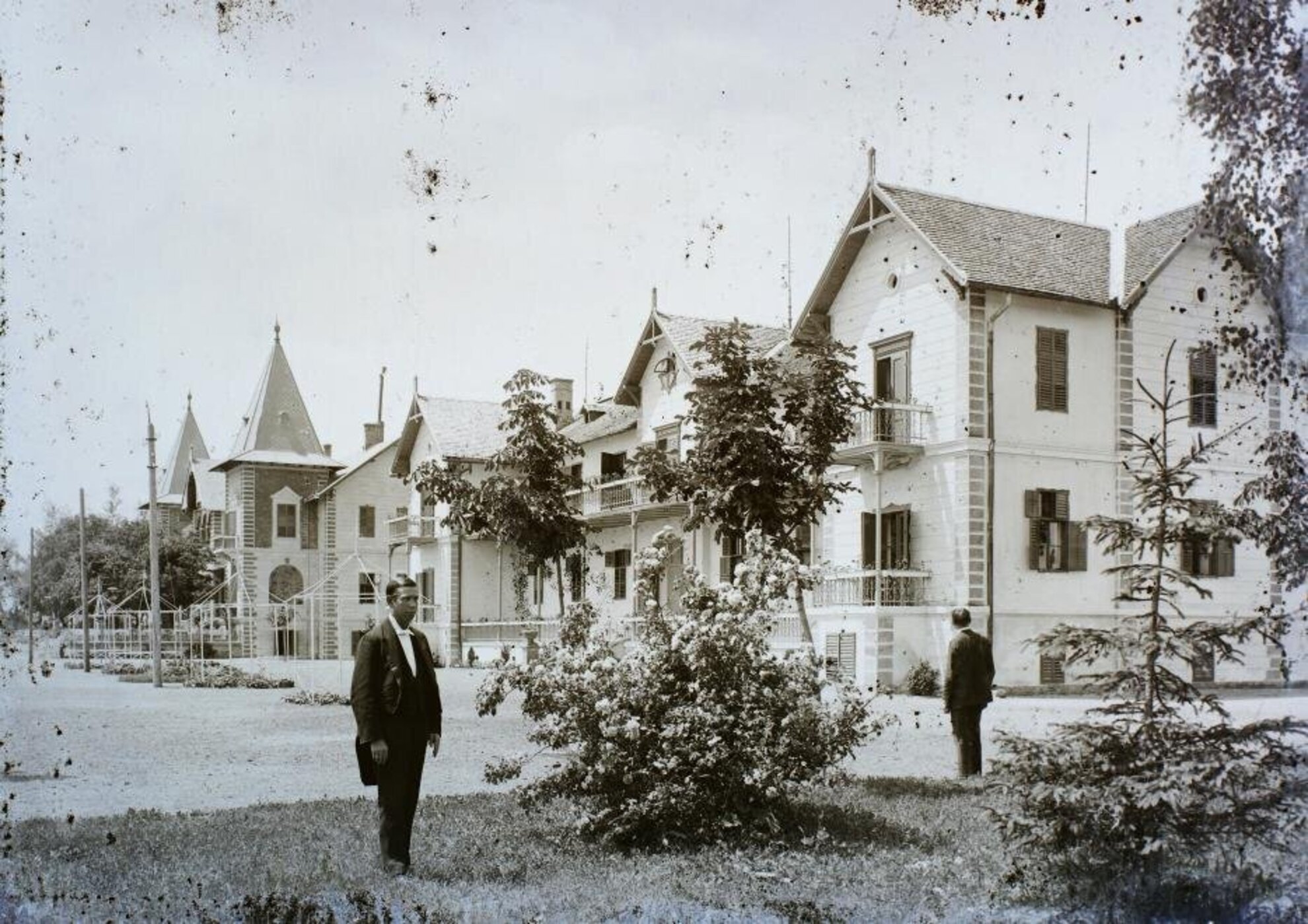
Keszthely, Kossuth Lajos (Fő) utca, with the Amazon Hotel to the left and Festetics Palace in the background is the caption of this 1911 photograph. Kossuth utca is now the main pedestrianised street of Keszthely, connecting the palace with the main square. The Amazon Hotel is now a superb exhibition and community space where you can learn more about the travelling habits of noblemen.
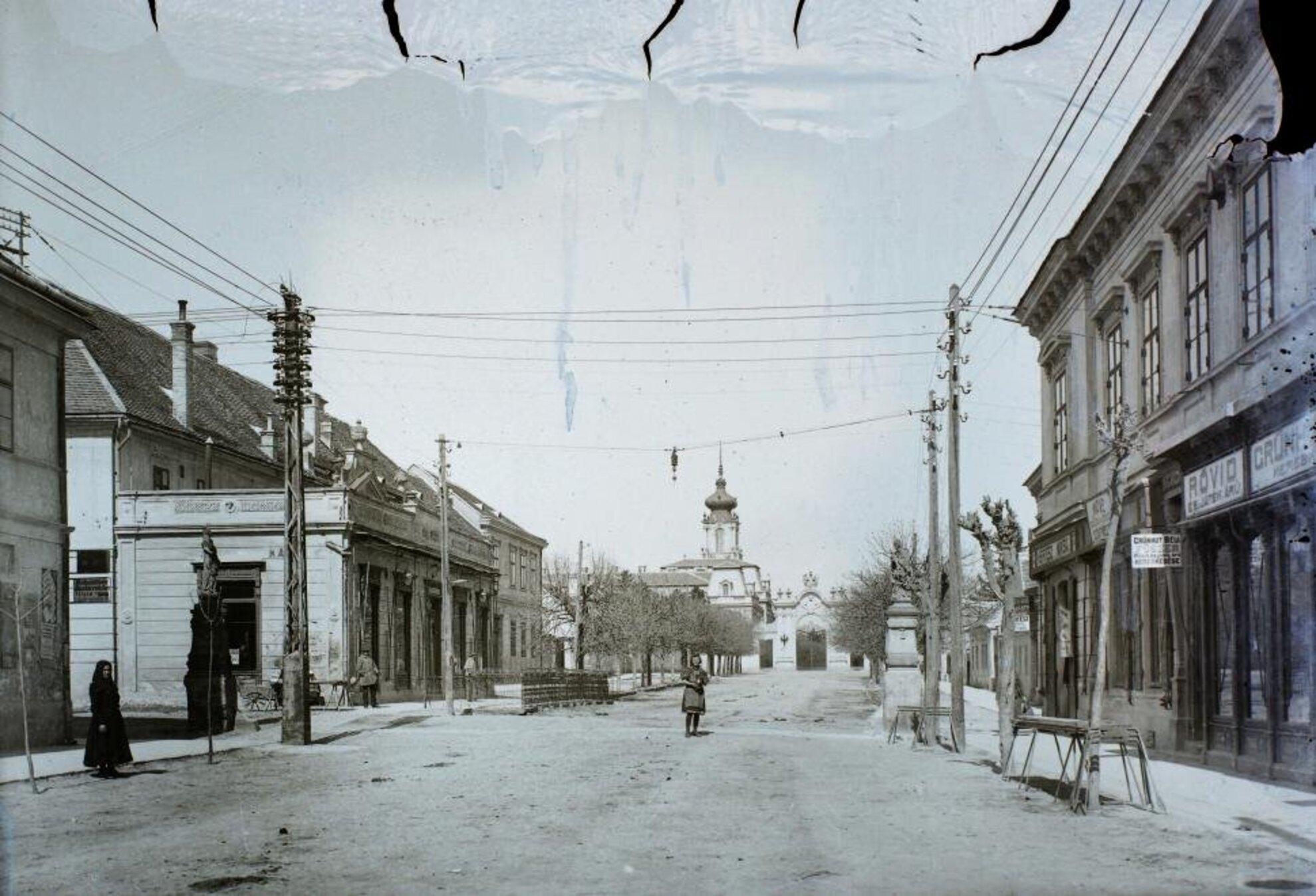
The following picture, taken in 1917, shows the main square, the Premonstratensian Secondary School (now János Vajda Secondary School), the friary and the Our Lady of Hungary parish church. These are the buildings that still make the main square what it is today. The school building dates back to 1892, while the friary was built in 1730.
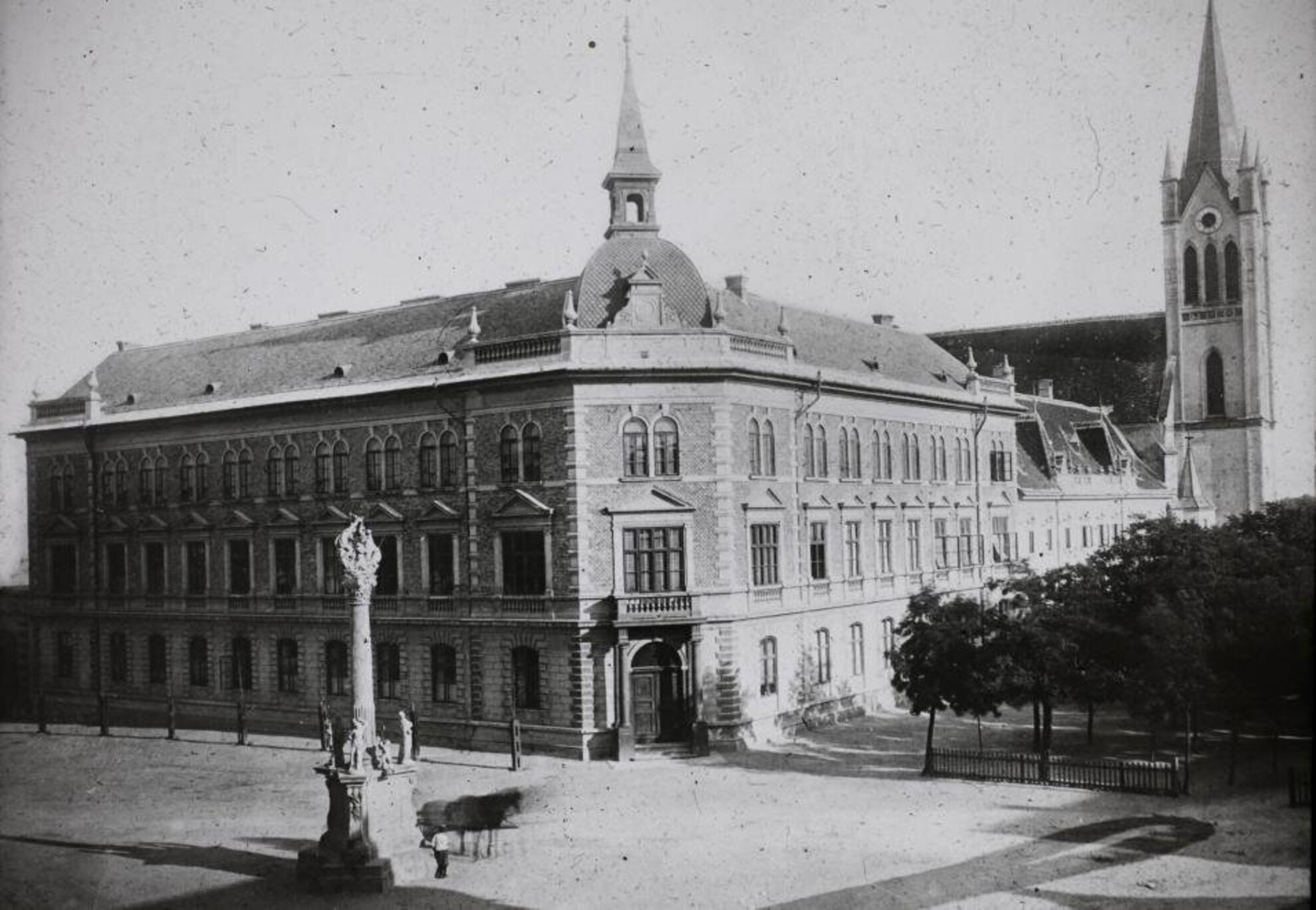
Captioned 22 Kossuth Lajos utca, the courtyard of composer Károly Goldmark’s house of birth, this photo is dated 1939, but it’s older than that. The composer was born here in 1830. The Baroque-style building has been here since the 1400s – back then it was the manor of the Pethő family. Following the post-war settlement of 1920, there were fewer resort towns left in Hungary, so Keszthely started to become more and more popular and the city expanded.
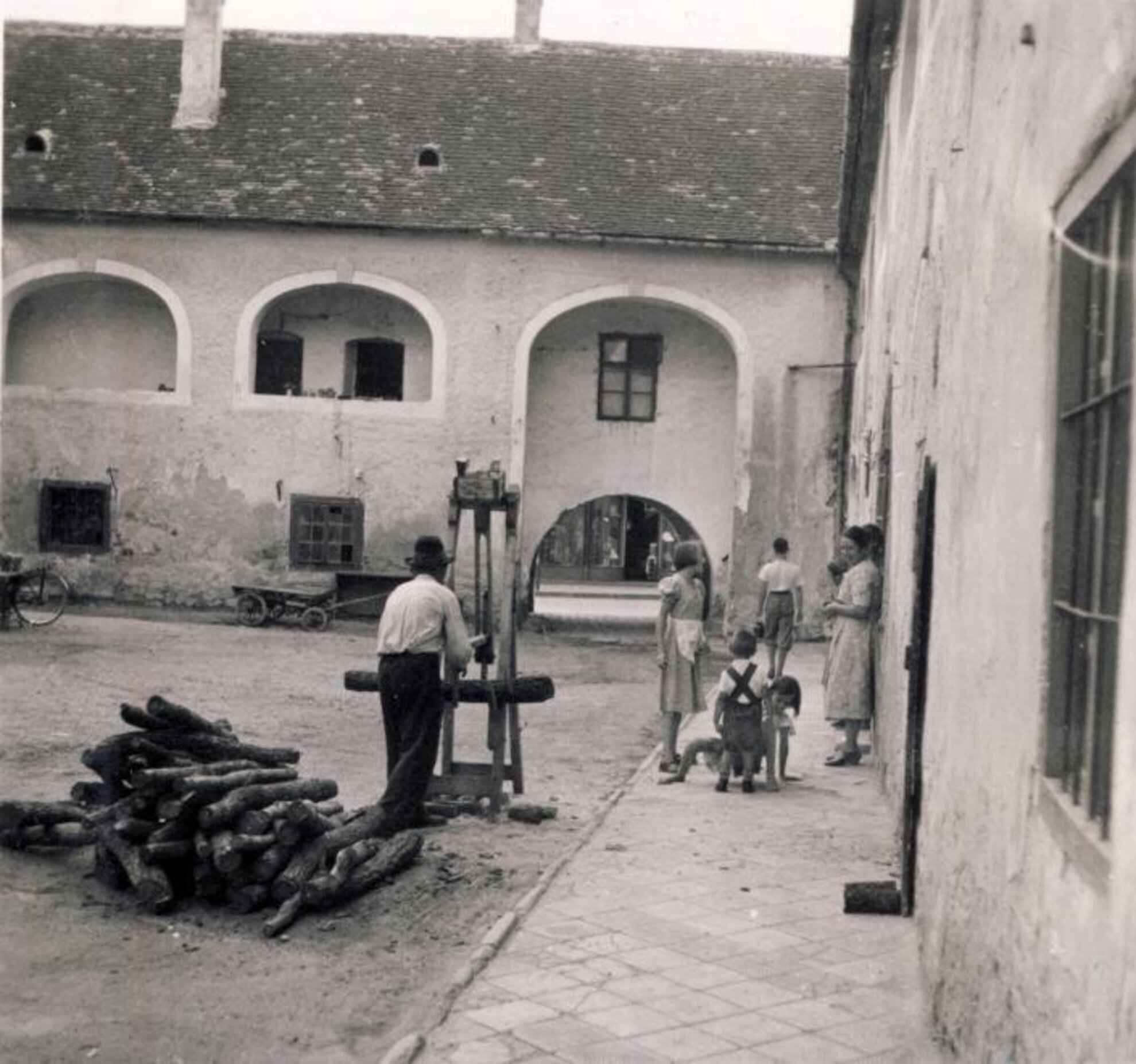
This is the gate in 1940, when World War II raged beyond Hungary's borders.
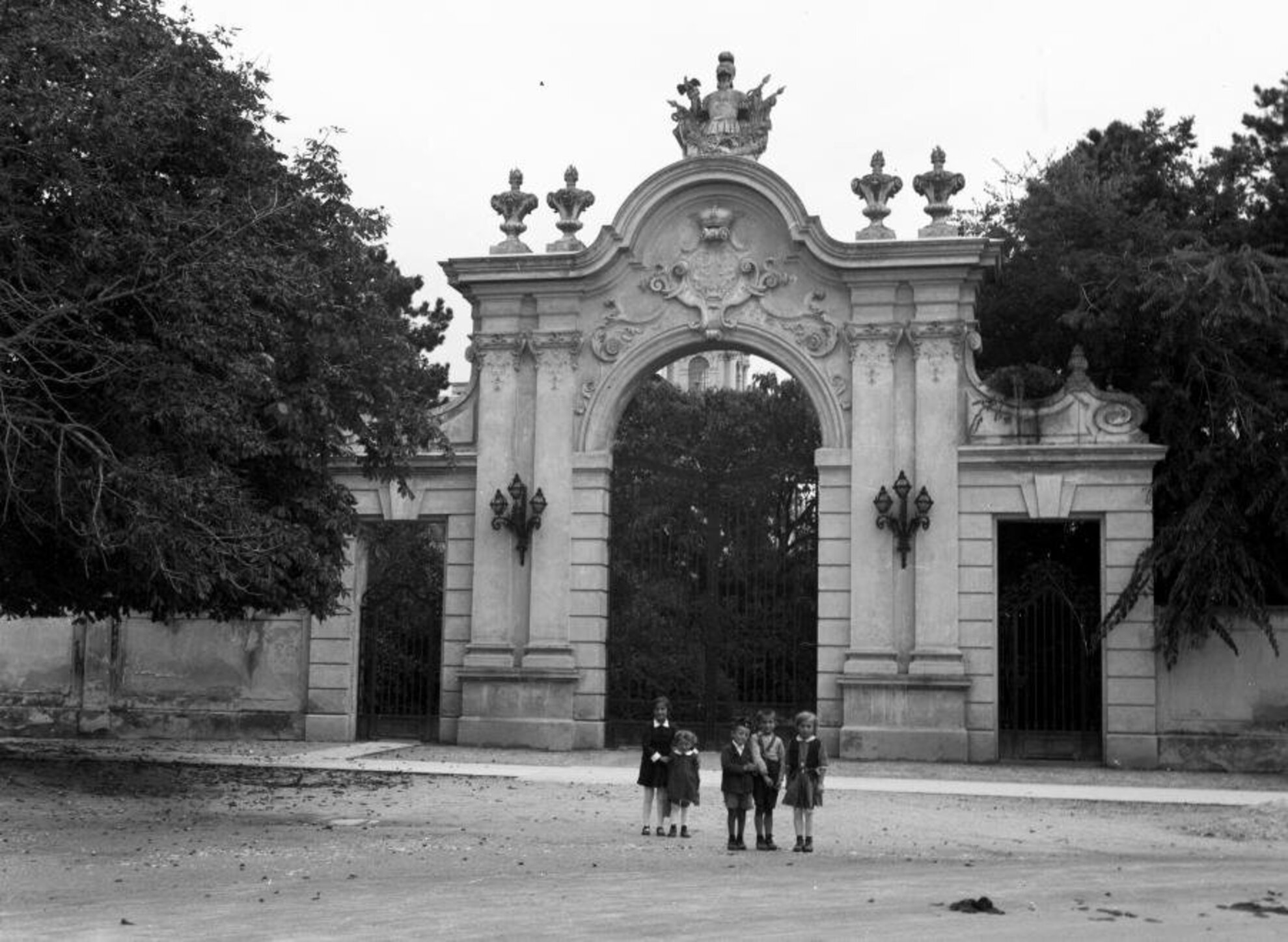
This photo from 1943 depicts a woman being taught air defence. Viktor Szabó took powerful photos of Keszthely during the war. The Allies carried out sporadic air raids and six people died during the biggest single bombing. A dogfight also took place above the city.
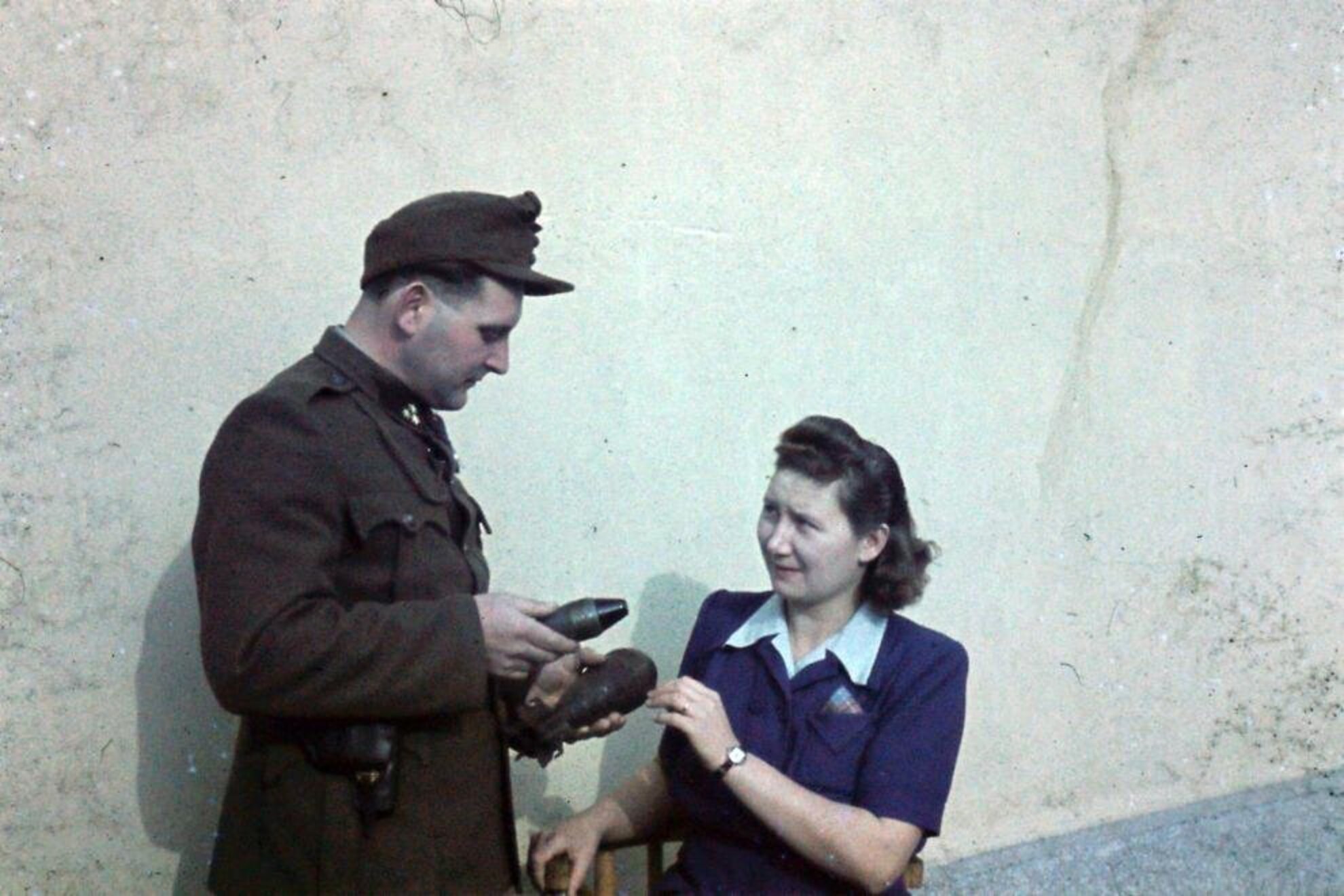
A photographer taking a picture of a shepherd in 1943 – a bucolic moment right in the middle of war.
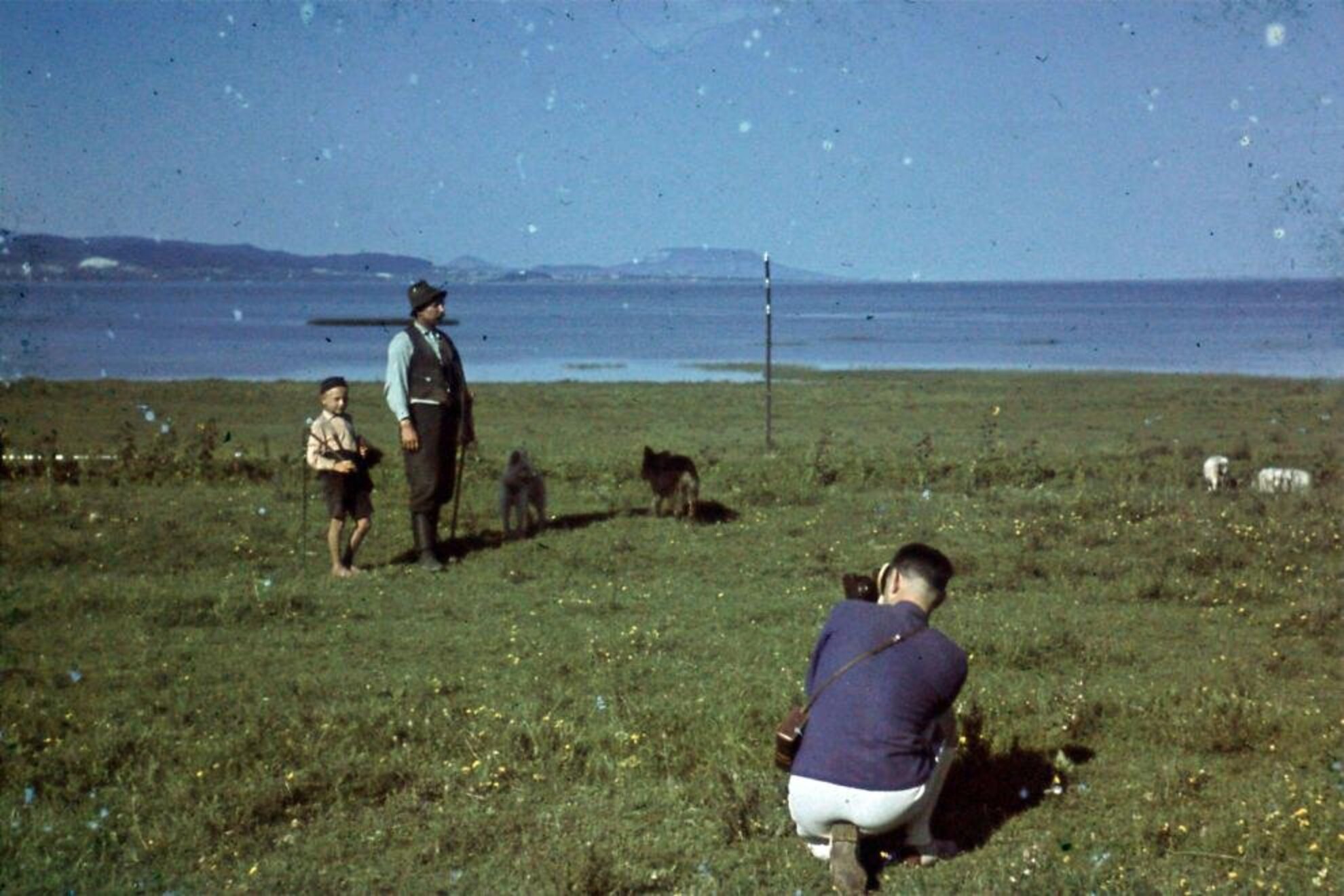
A procession on Kossuth Lajos utca in 1943, with marching soldiers in the background.
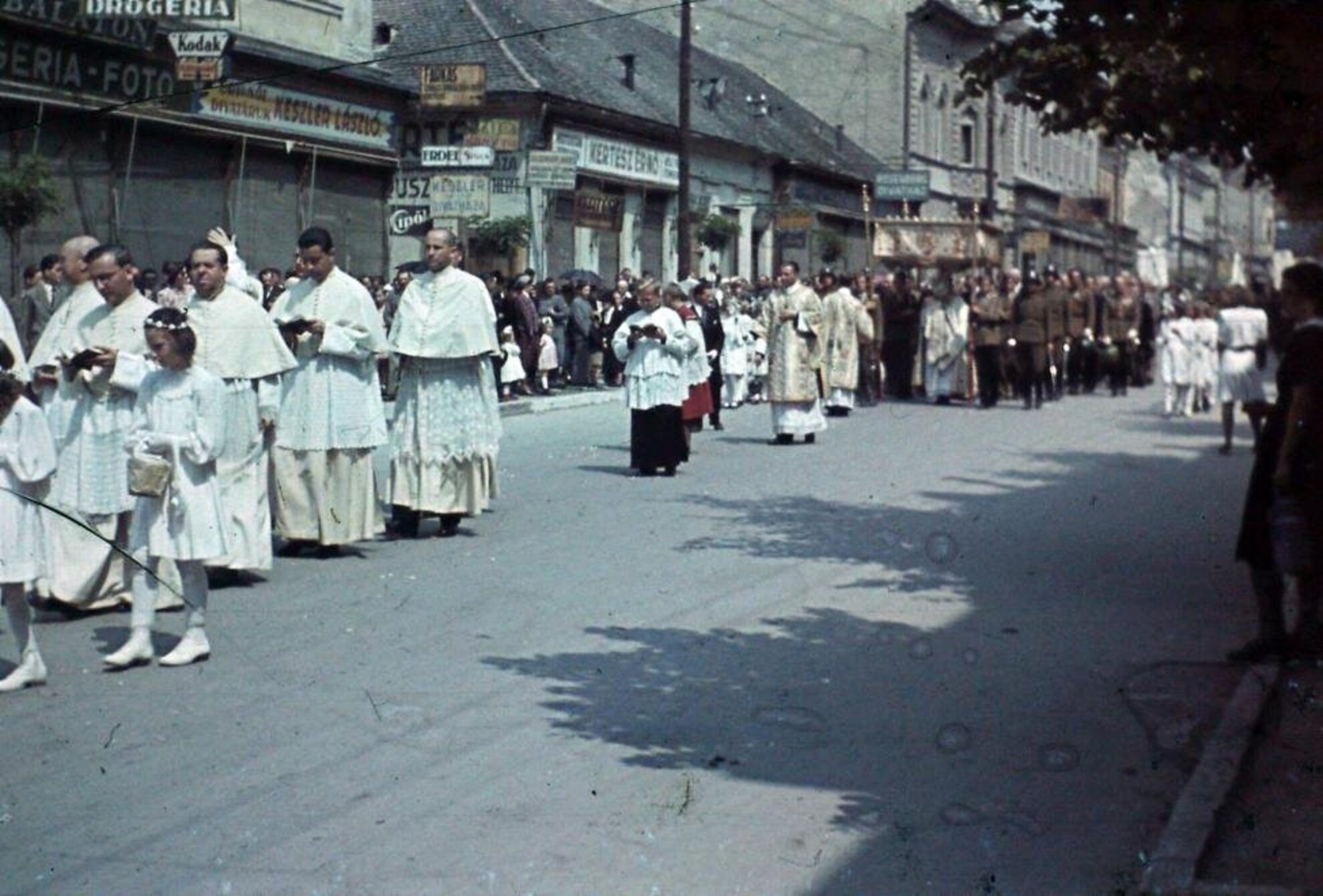
Main square, with City Hall to the left and the theatre alongside (now Balaton Theatre), 1944 – the soldiers, the mobilised civilians in helmets and a Jewish woman wearing the yellow star are all tell-tale signs of the date. The Holocaust took more than 800 victims in Keszthely. The war ended in the town on 30 March 1945, when the Soviets marched in.
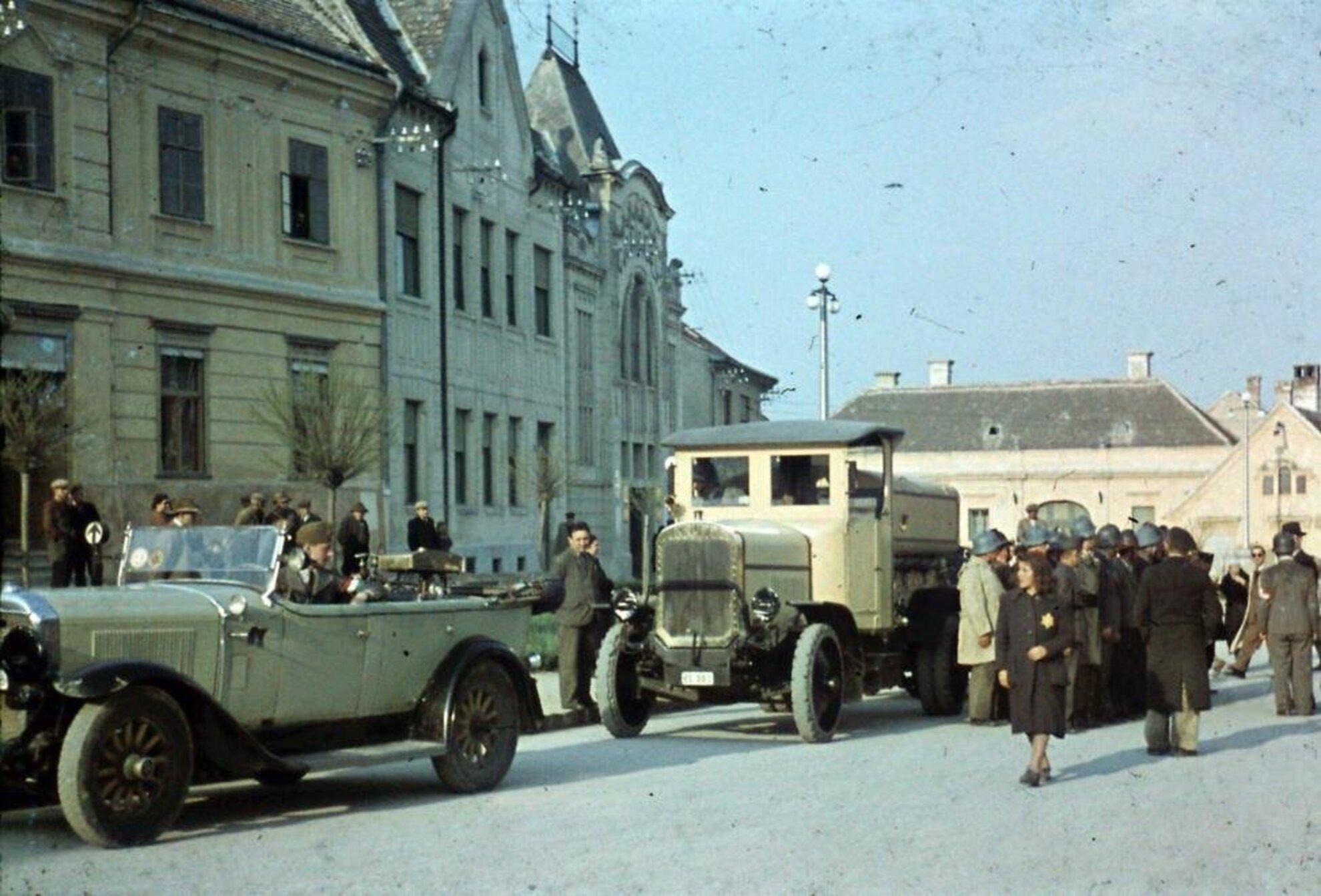
A British plane was hit during combat. The caption reads: Lifting out an English Vickers Wellington bomber, sunk in Keszthely Bay. The picture was taken in 1946, approximately 400 metres from the shore.
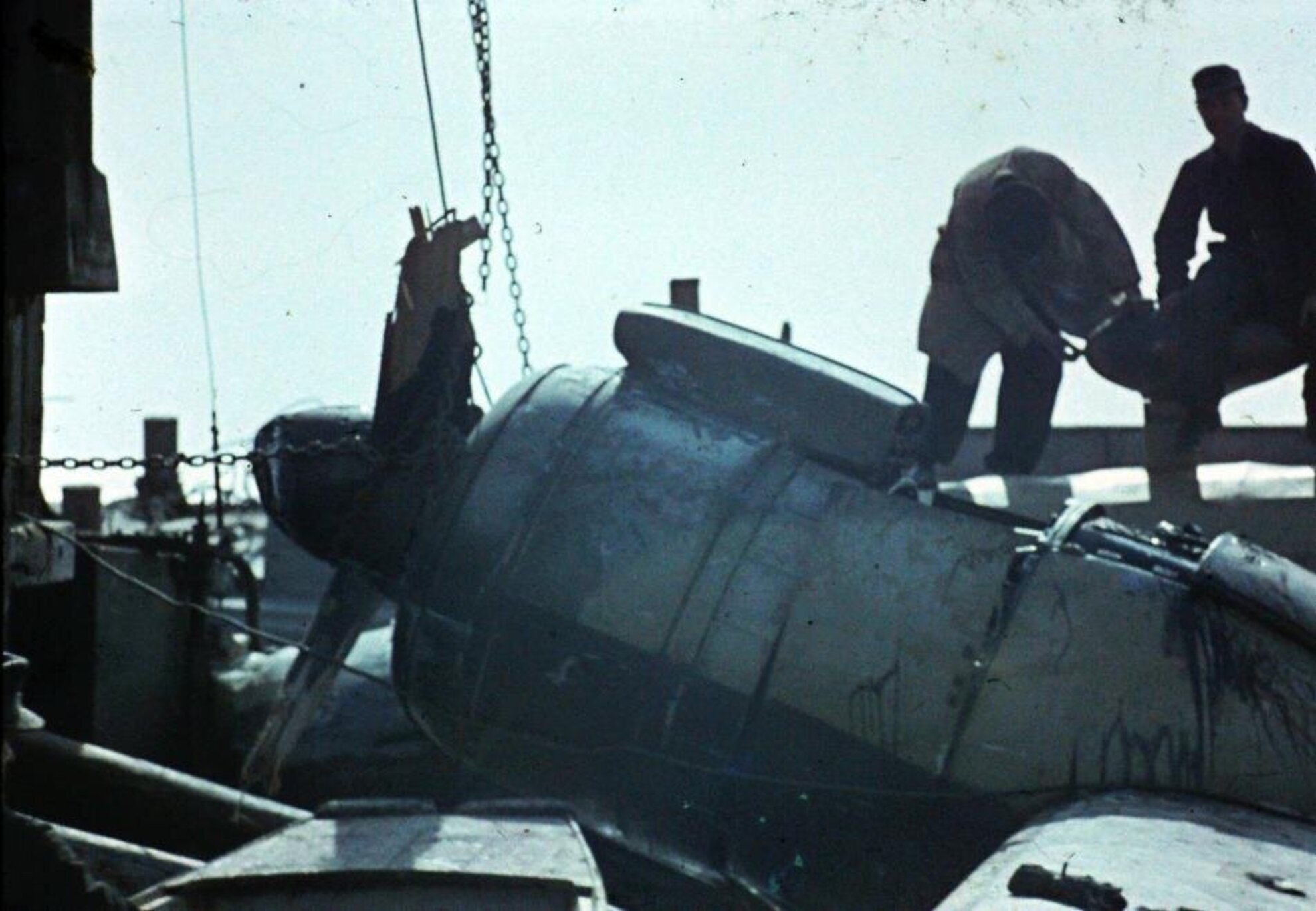
The gate of Festetics Palace in 1951, during the Stalinist Rákosi era. The symbol of this noble family was taken down. The town was attached to Veszprém County and received little resources. The palace was looted during the war, but the library survived, as it was walled in by a quick-thinking Soviet officer as the front line got closer.
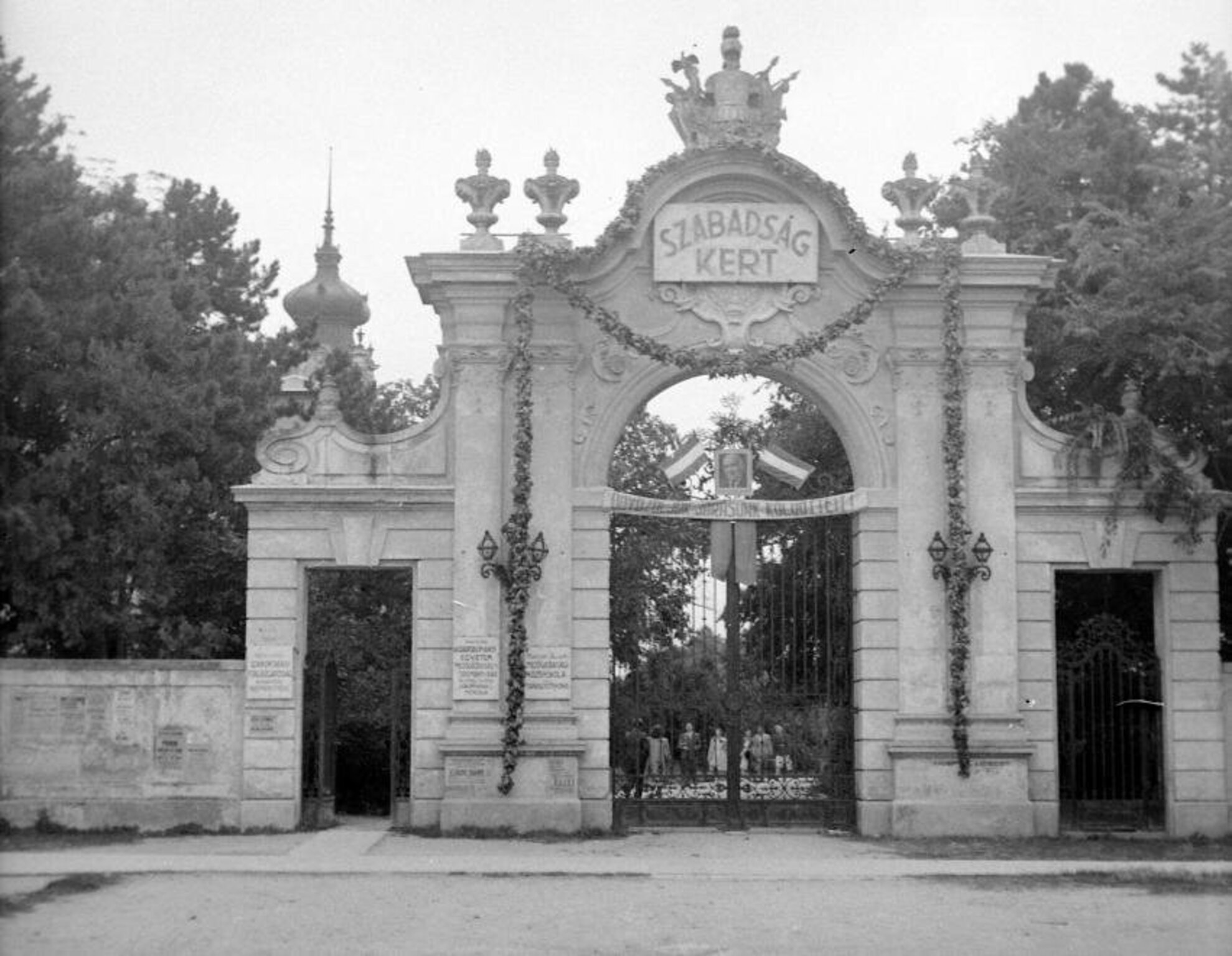
A heart-shaped pram on the shore of Lake Balaton in 1956. The year was a turbulent one for the town, as it was caught up in the Hungarian Uprising. Local students tore down statues and vehicular combat units joined them until the Soviets re-occupied. University students and professors were most affected by the subsequent retaliations.
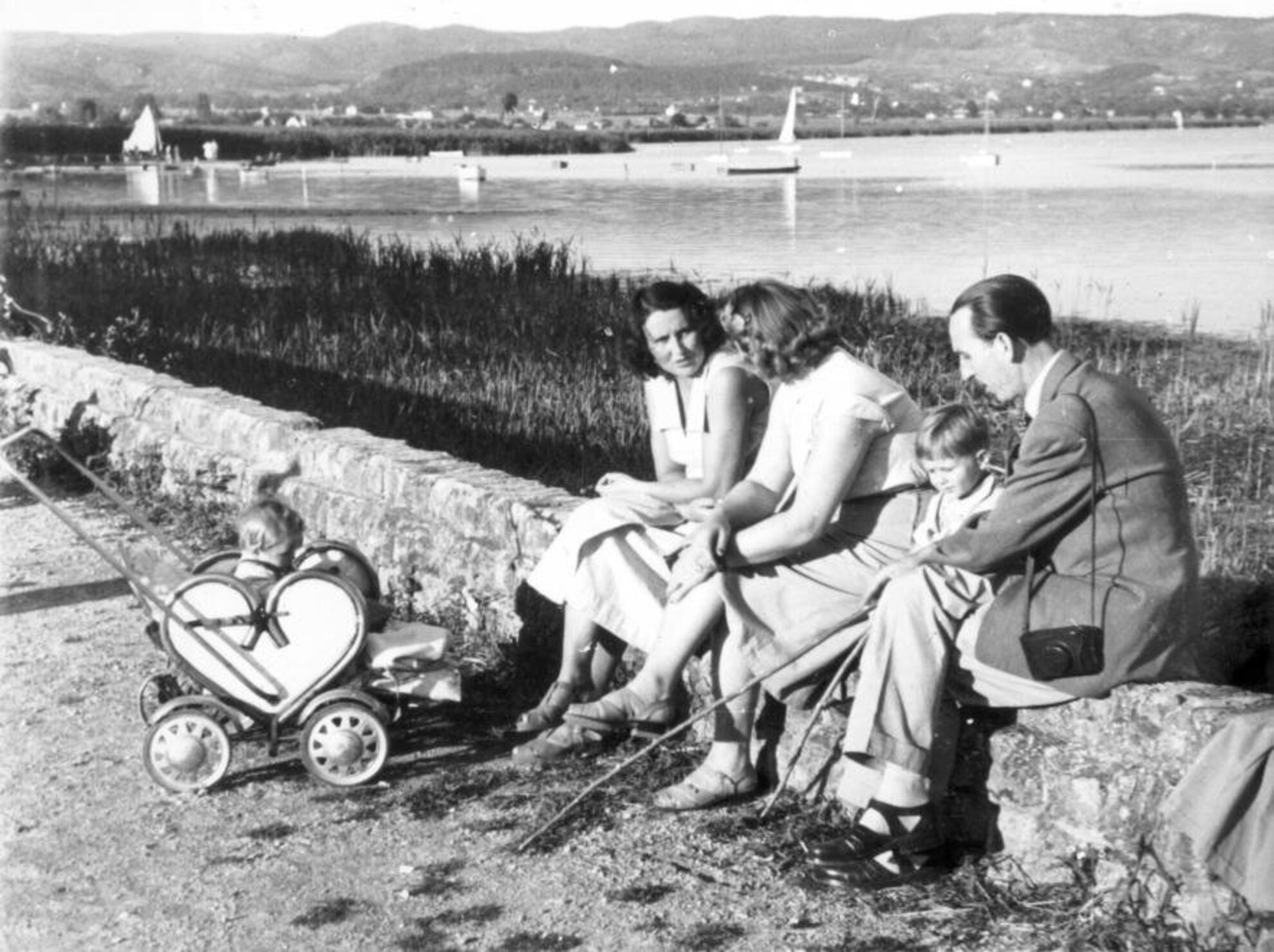
Now a pedestrianised street, this is a picture of Kossuth Lajos utca in 1959.
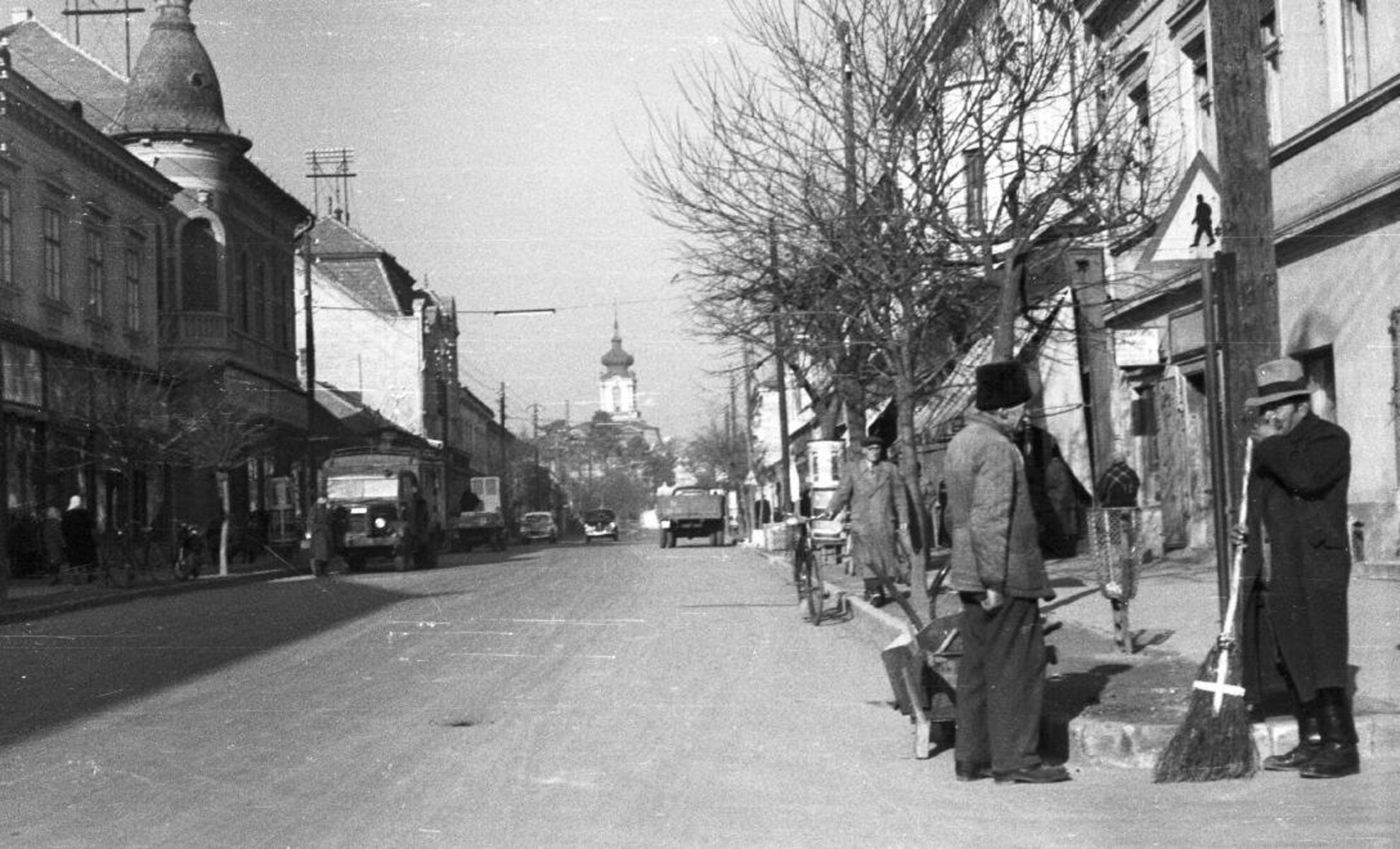
Main square with Our Lady of Hungary Church to the right and Kossuth Lajos utca, says the caption. The photograph dates back to 1960, when the political climate started to ease up, and resources began to trickle into Keszthely.
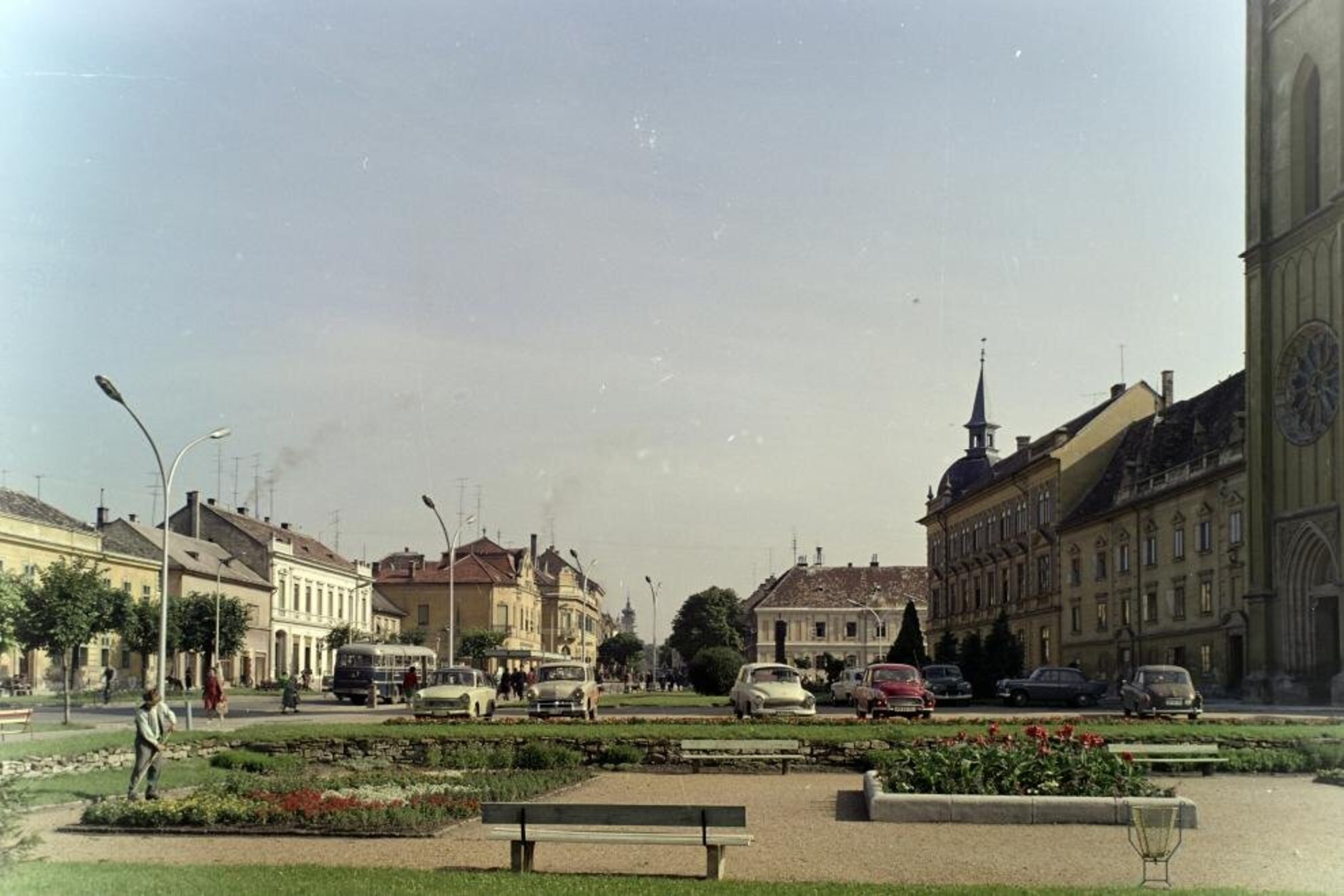
Sziget Beach in 1961, with a refurbished exterior reflecting the style of the era.
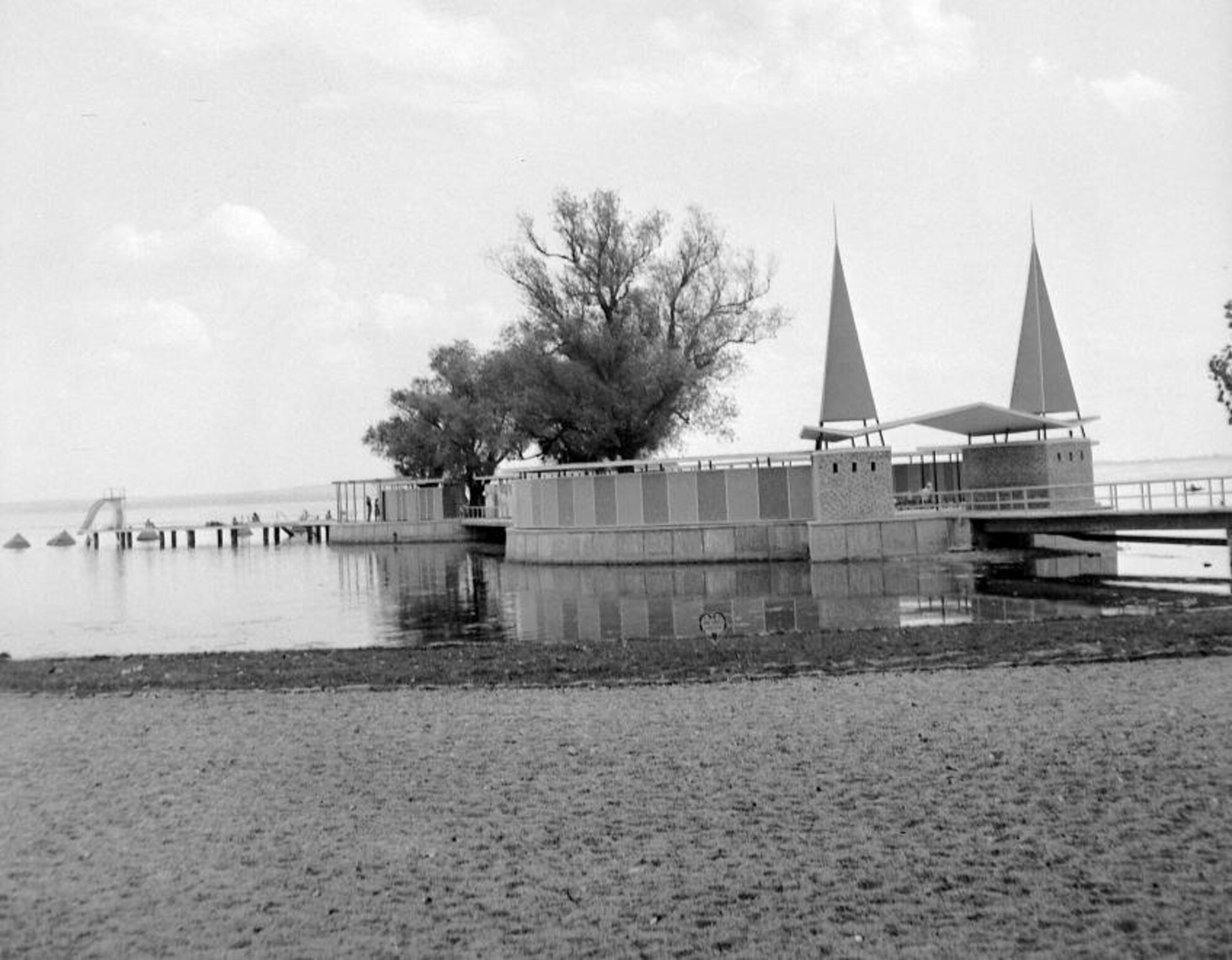
23 Georgikon utca in 1963, with the modern building of the Autóker car dealership and the National Bank. Keszthely’s quaint cityscape was being broken up by residential blocks and Socialist-style architecture.
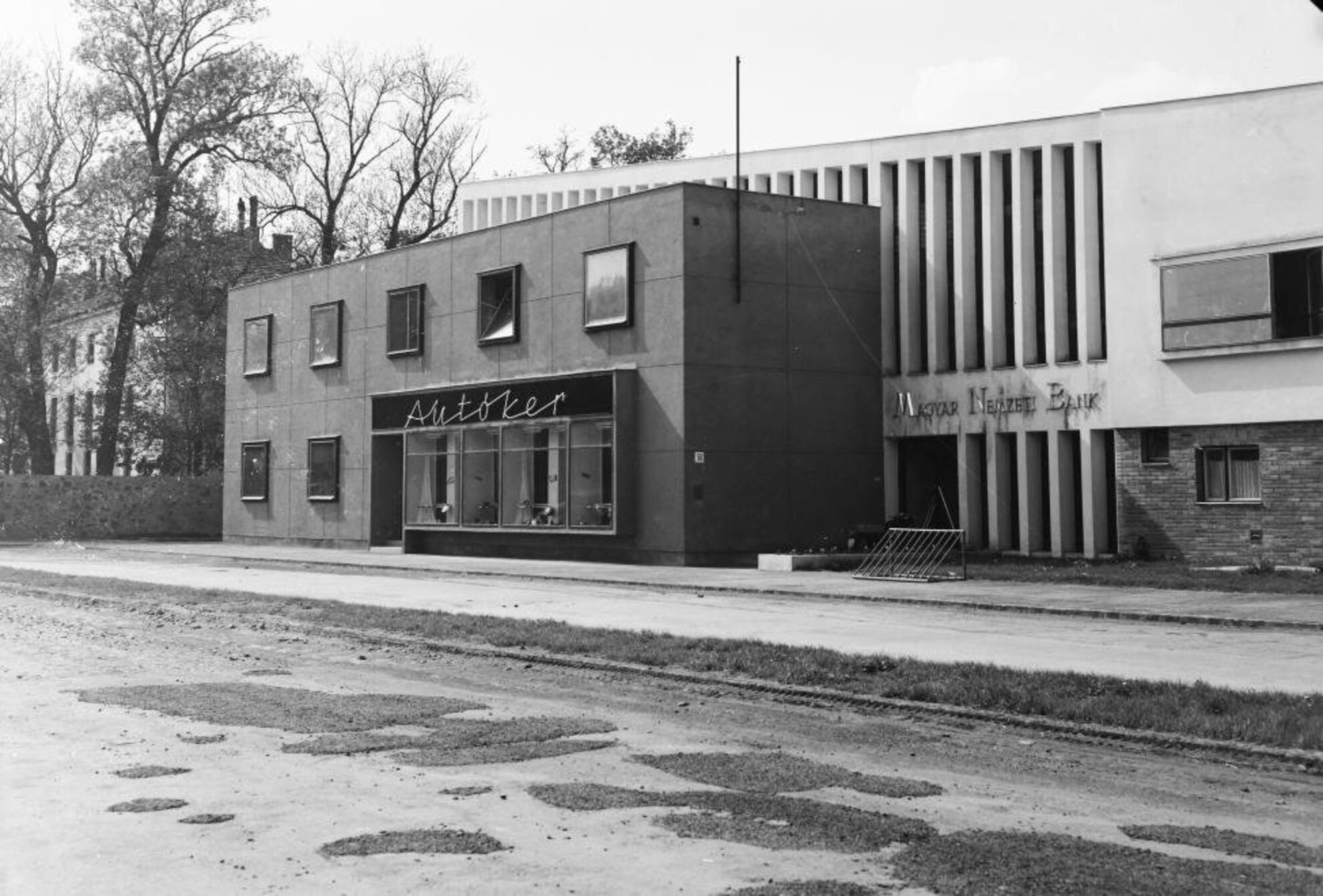
A photo from 1968, showing a statue by András Kocsis and the promenade on the lakeshore. The new building of the Helikon Hotel can be seen in the background. Opened in 1971, it now awaits refurbishment. The photo is a mirror image – in reality, the benches face the opposite direction.
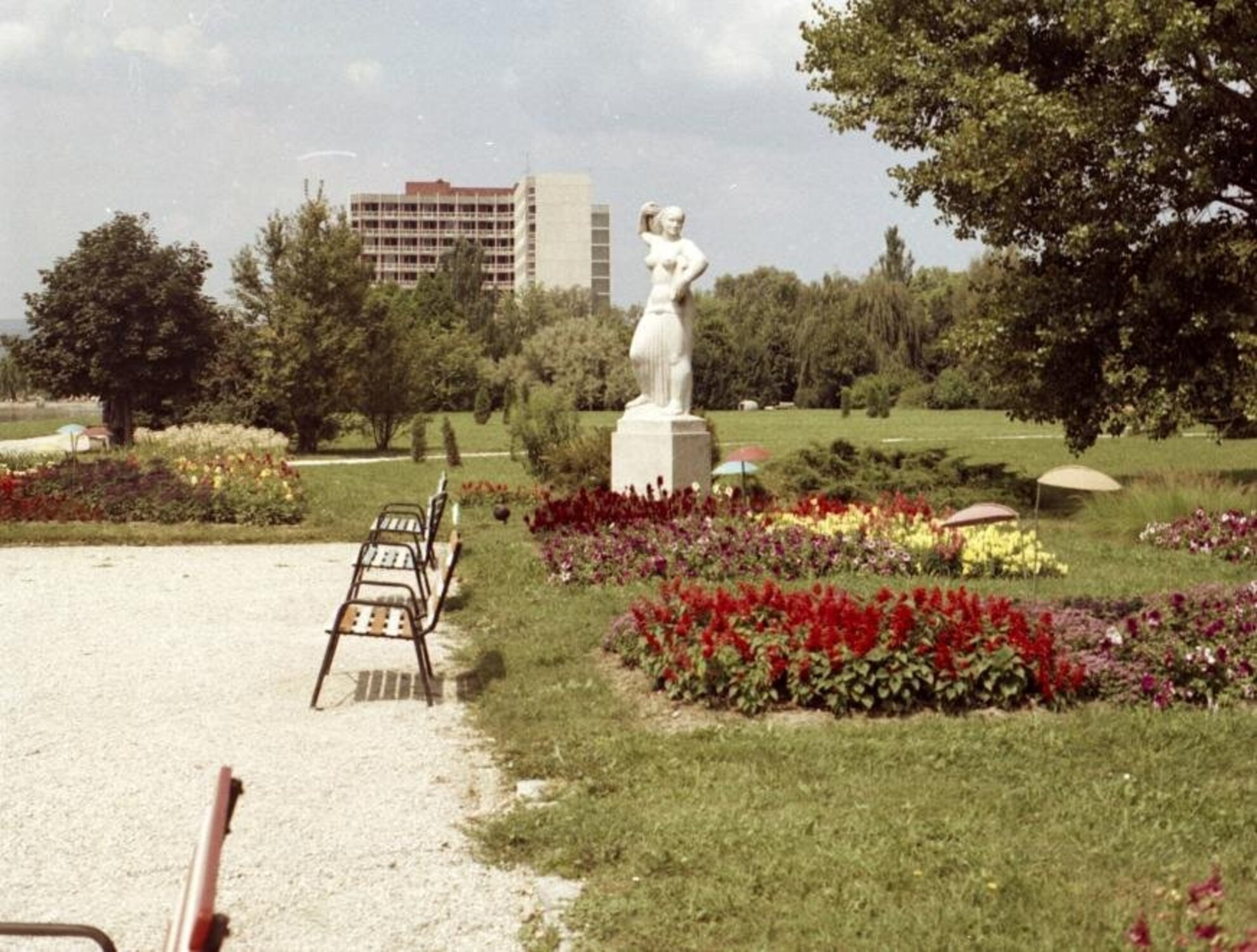
Motel on Csíki Ferenc Promenade in 1973. These buildings were made for the 1959 World Fair in Brussels and were rebuilt around Lake Balaton. The one in Keszthely was demolished in 1985 and the Phoenix Hotel built in its place.
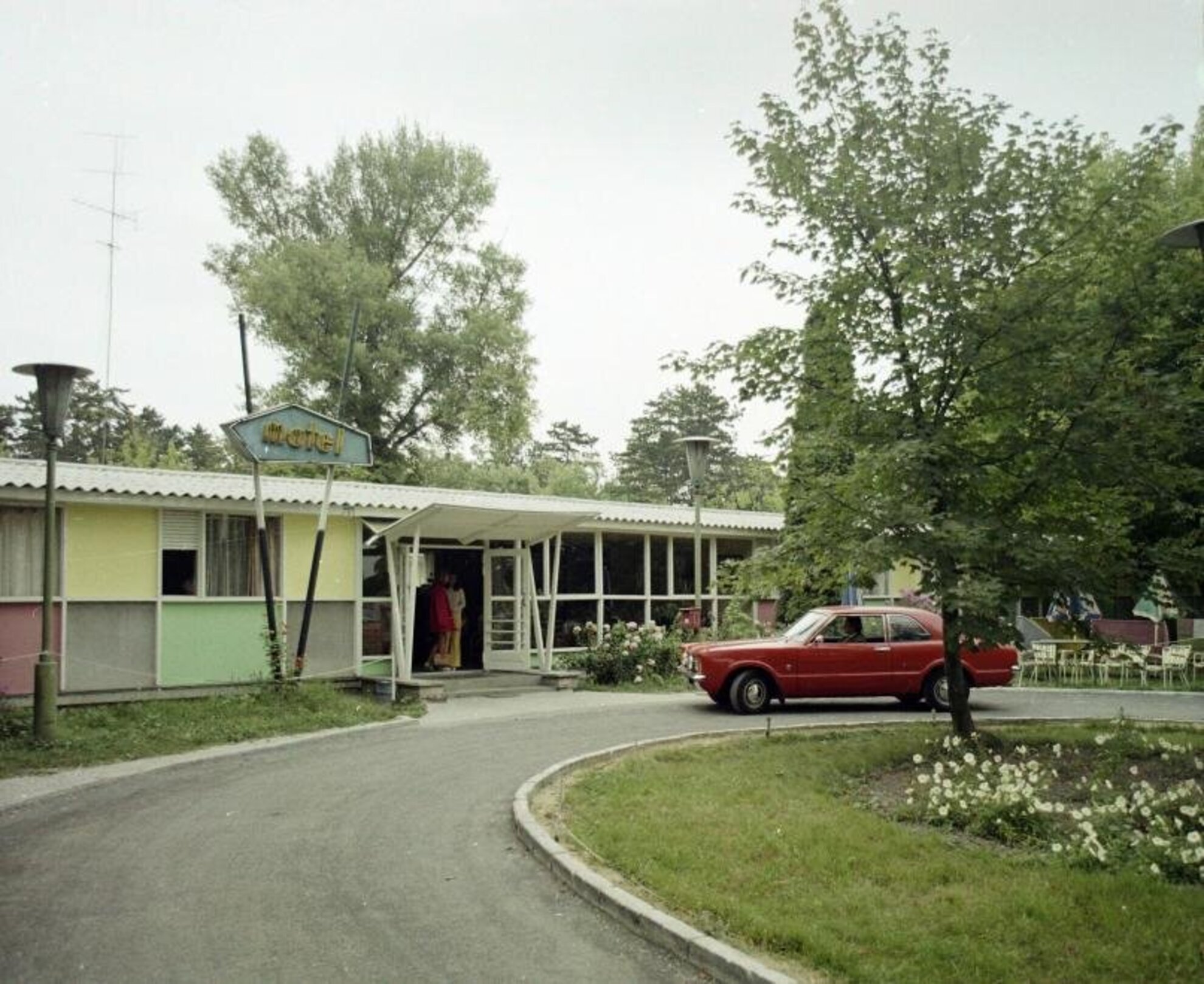
Festetics Palace during reconstruction in 1975. Keszthely once again became part of Zala County in the 1970s, and this was the biggest event that decade.
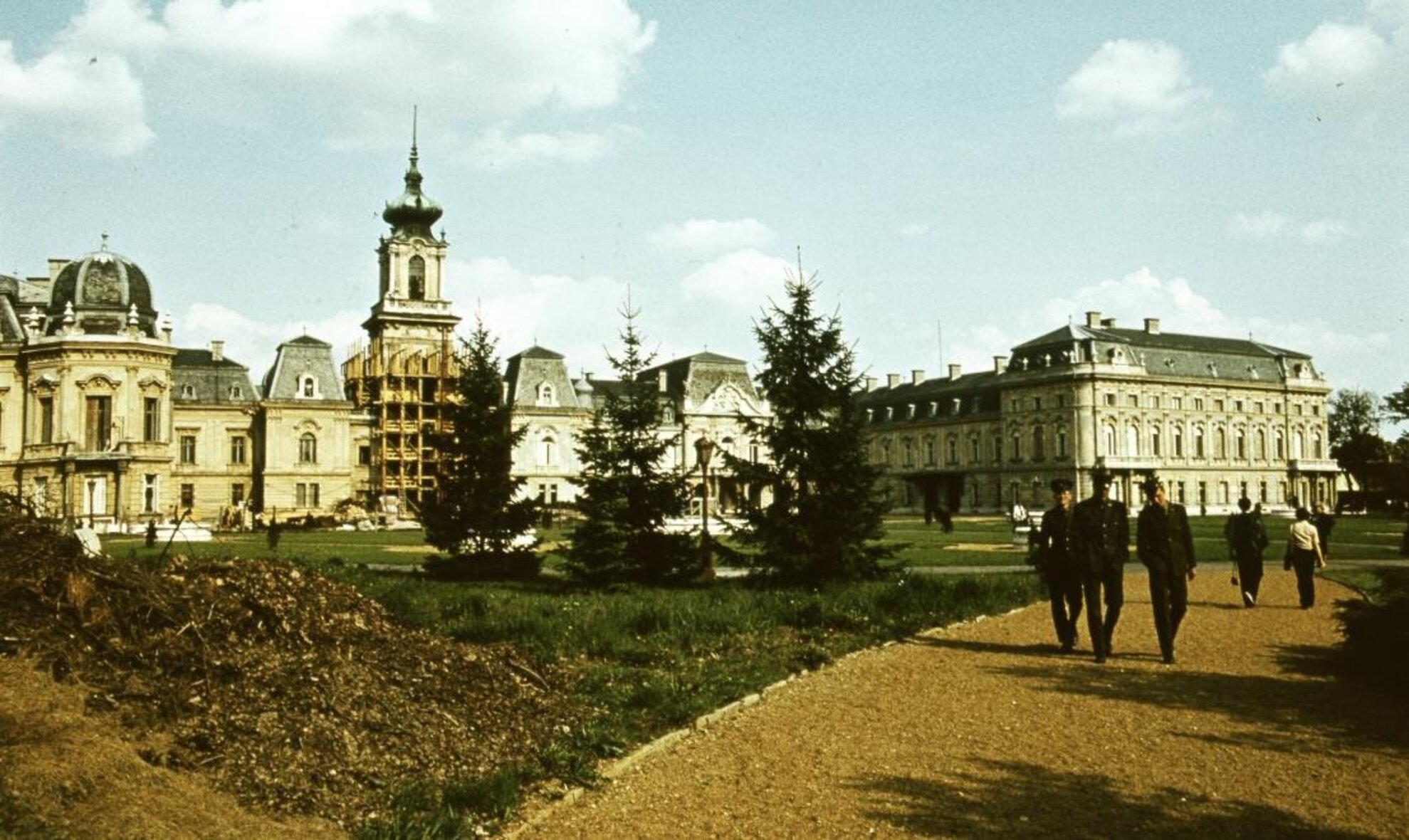
Frozen Lake Balaton and the Helikon Hotel in 1980.
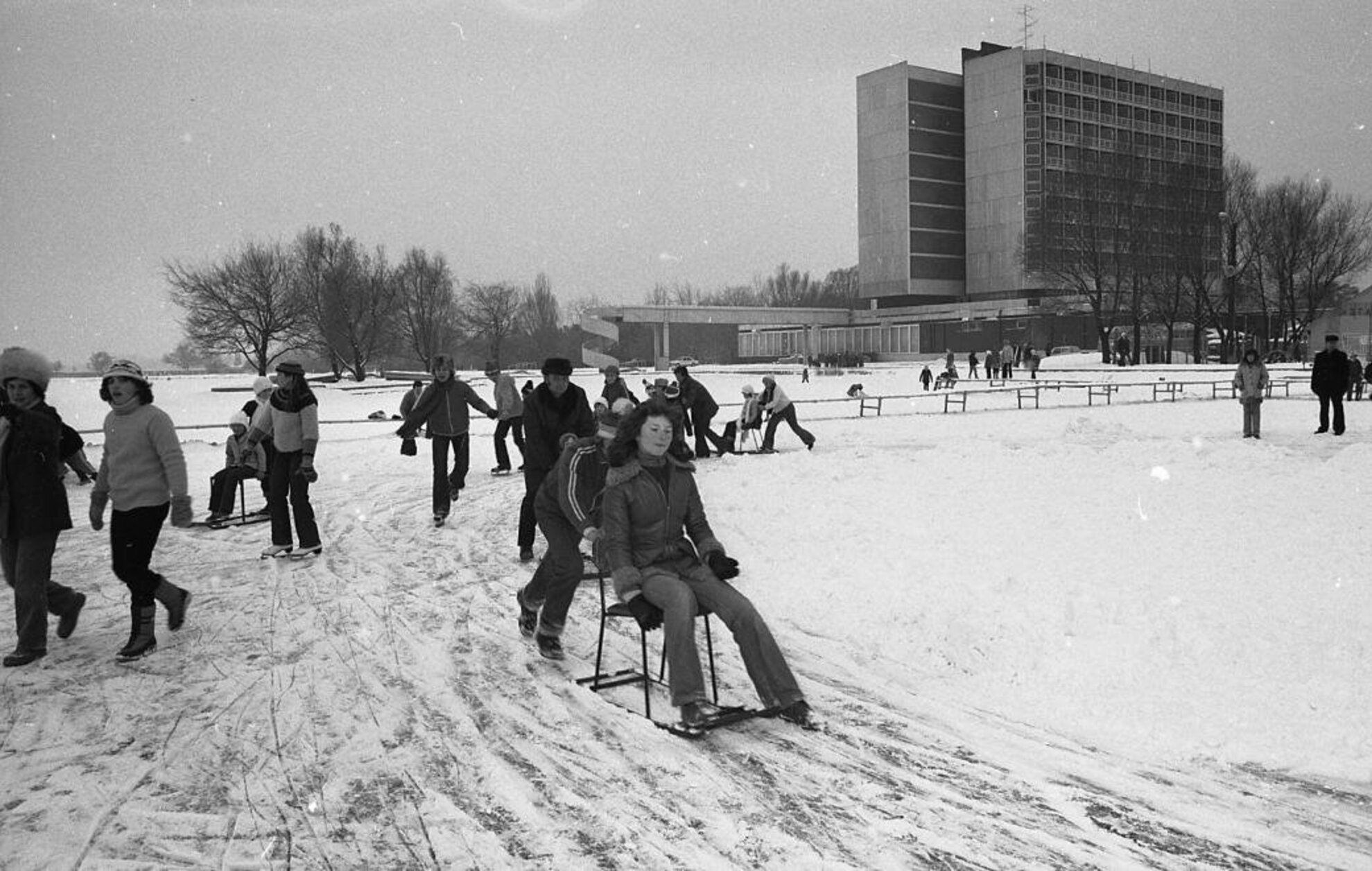
A TV news cameraman captured a Trabant being lifted out of the frozen lake in 1982. There are various stories about this incident: some say the man wanted to fish and decided to go by car as far as he could, others say he wanted to show his wife the car he received as a wedding present as he drove it over to Vonyarcvashegy. It took two days to hoist it up from three metres deep. It all happened during the extremely cold winter of 1982 when 48 cars were permitted to go onto the ice at Fonyód for a special event.
